
- DESTINATIONS
- SEARCH FOR TOURS or QUICK LINKS
- TOUR CALENDAR
- REPORTS & PHOTOS
- BIRDS OF A FEATHER SERIES
- PHOTO GALLERY ARCHIVE
- GUIDES & STAFF
- LATEST NEWS
- HEALTH PROTOCOLS
- PRIVATE TOURS
- JOIN OUR MAILING LIST
- ABOUT FIELD GUIDES
- INFO & POLICIES
- TRAVEL RESOURCES
- GUIDING CAREERS
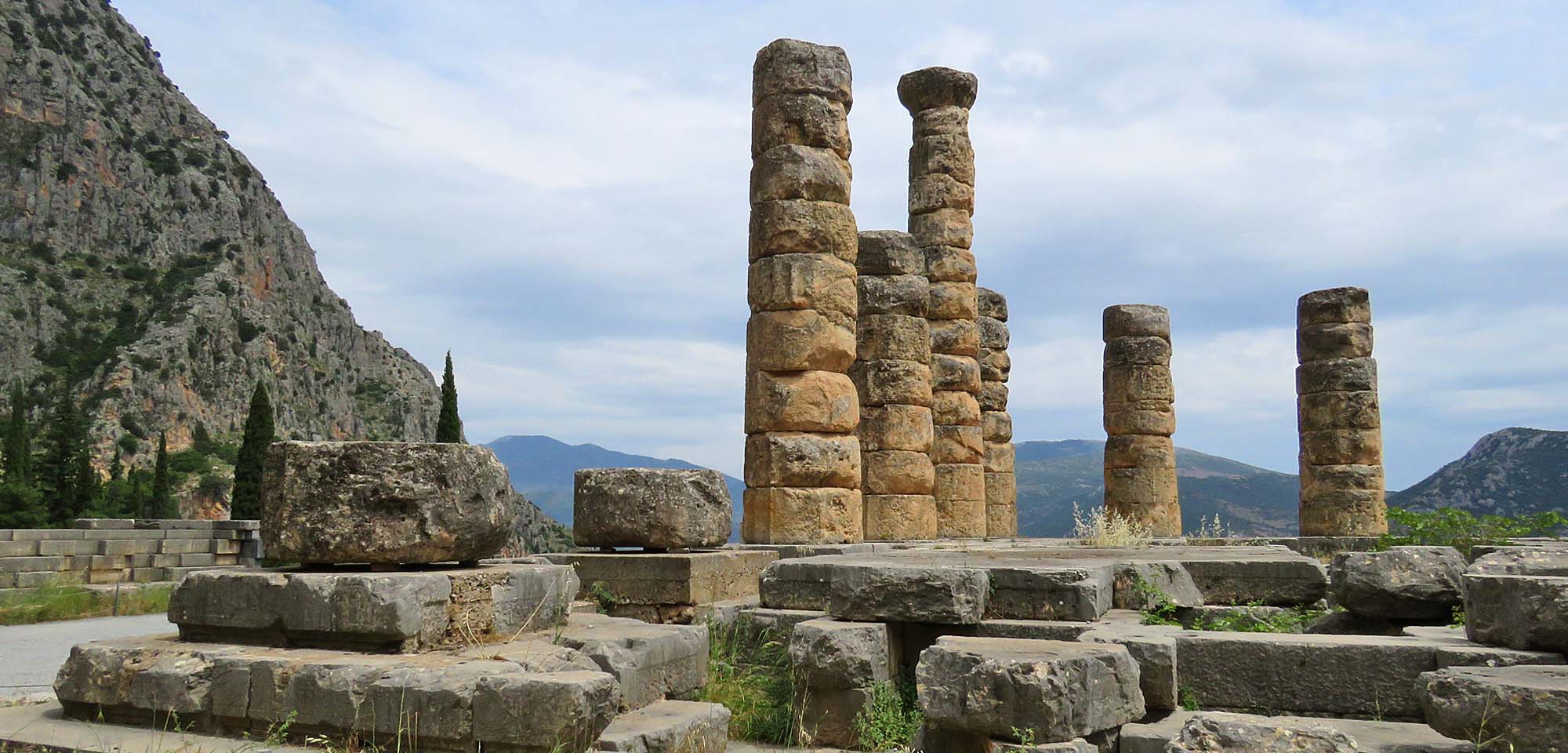

Classical Greece
Greece has been known for millennia as a center of culture and learning, with a fascinating human history that spans some 4000 years of civilization. And, fortunately for those looking to combine a bit of culture with their birding, the country's natural history is equally intriguing. The region's southeast corner dissolves into a riot of islands, mountains, and rugged coastlines, and as a result of this--and the country's perch at the edge of three biogeographical regions--Greece offers a surprisingly diverse and alluring suite of birds.
We'll visit sites ranging from the teeming mudflats of the Evros delta, which should hold a vast assemblage of shorebirds and herons, to the pine-scented slopes of the northeast's craggy mountains, where a magnificent array of raptors--including five species of eagle and three of vulture--are possible. The timing of our tour coincides with spring migration, which should add to our list a host of species heading for more northerly or westerly climes.
In addition to the excitement of birding, this tour offers the chance to sample some of the country's great wealth of historical sites. We'll start with a day in Athens, where the remarkable Acropolis and Parthenon will be among the highlights, and then visit the spectacular royal tombs at Vergina (once the seat of ancient Macedonia), the Sanctuary of Apollo and Temple of Athena at Delphi, and the Byzantine chapel of Osios Loukas (famous for its fabulous gilded mosaics).
Select the KEY INFO tab or click here for our itinerary plus space requests, status, fees, limits, and guides for any departure.
ITINERARIES • TOUR STATUS • DETAILS • SPACE REQUESTS
- 2026 (PDF expected Aug 2025)
DEPARTURES • We have 2 departures currently scheduled through 2026, with details including limits, guides, fees, and space available listed below.
May 5-19, 2024 Guided by: Megan Edwards Crewe & local guide Tour Manager: Nicole Cannon Tour Limit: 12 Status: Provisionally full; waitlist available - This tour is full, and all those booked have made deposits. Click below to be waitlisted for this tour with no obligation; if you are waitlisted, we will also notify you in case of an added departure of this tour. Tour Fee: $5650 Deposit: $575 REQUEST WAITLIST OR MORE INFO
May 3-17, 2026 Guide: TBA Tour Manager: TBA Tour Limit: 12 Status: Open - Space is still available on this tour, and we are accepting provisional bookings. No deposit is required until you receive the itinerary. Click below to book space. Tour Fee: Fee TBD / 2024=$5650 REQUEST SPACE OR MORE INFO
Enjoy looking through the 1 most recent Field Guides triplists for this tour linked below!
- 2018 (May departure guided by Megan Edwards Crewe)

Explore the amazing Nature of Greece
Guided birding and wildlife photography, ¨ the physician heals, nature makes well ¨, - aristotle -, our services.
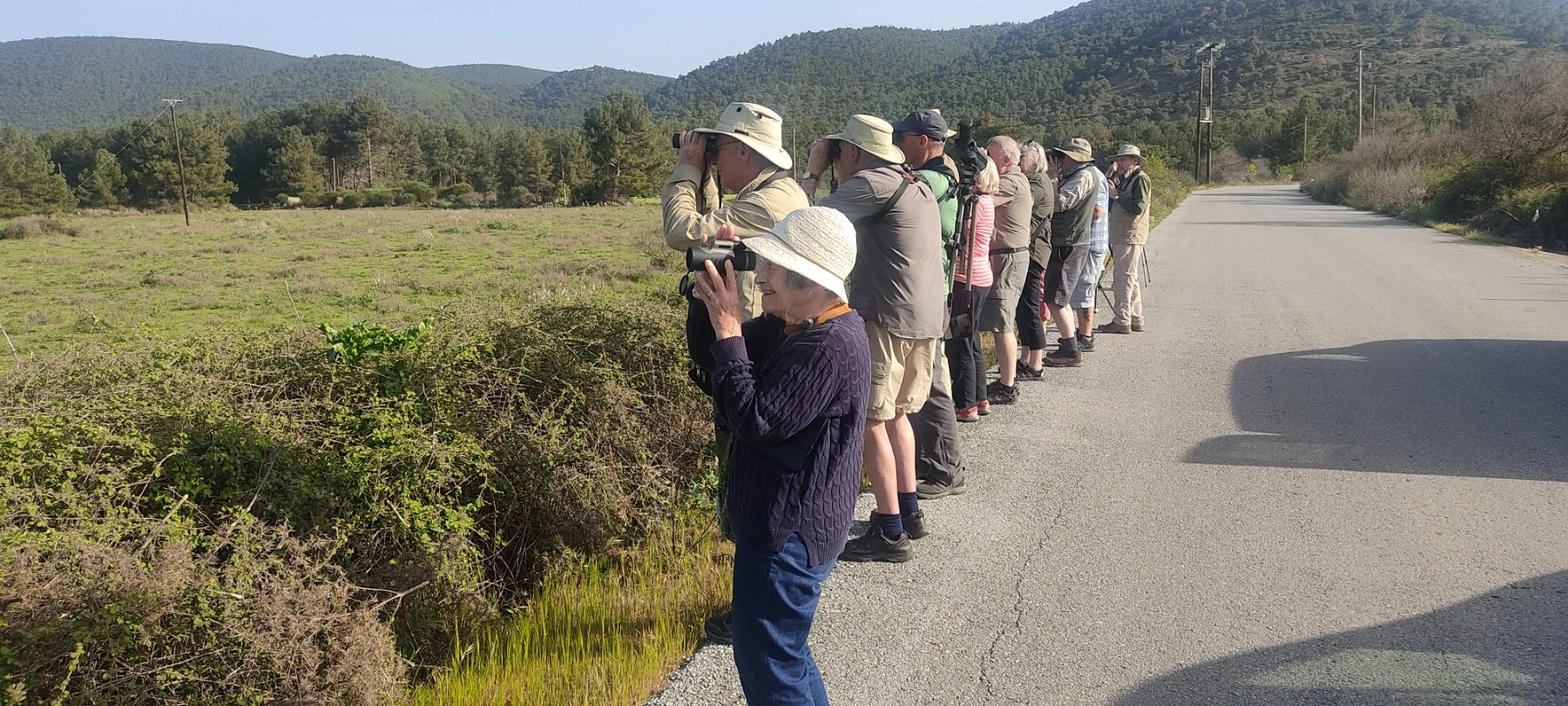
Guided Birding
Join our team of bird experts on a unique bird watching adventure in Greece’s beautiful countryside! Our exceptional service and attention to detail guarantee an unforgettable experience full of memorable moments. Connect with like-minded enthusiasts and observe stunning avian wildlife in their natural habitat. Reserve your spot now and get ready to discover the wonder of bird watching!
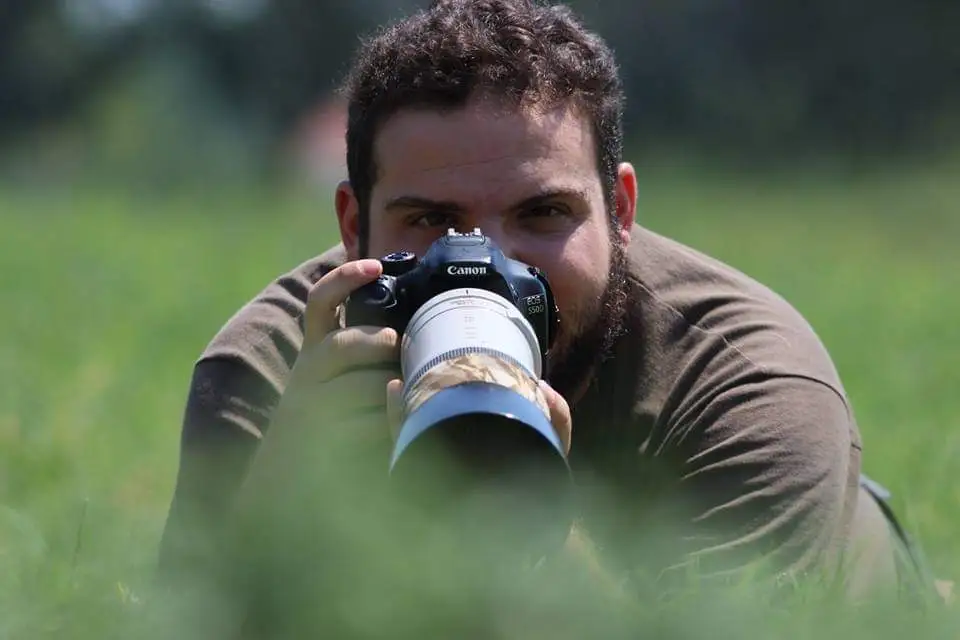
Guided wildlife photography
Are you itching for a new adventure? Look no further! Our team is prepared to make your wildest dreams a reality. Trust that anything is possible when you’re with us. Get ready to embark upon a transformative journey of discovery, where you’ll be in awe of the incredible wildlife around you. Your time with us will undoubtedly be unforgettable. With our expertise and knowledge of the natural world, we’ll guide you through a one-of-a-kind experience that will leave you feeling fulfilled and invigorated. Join us on this journey and let’s go wild together!

Photography Hides
We offer premium photography hides for hire to capture stunning photos in privacy. Our hides are versatile and perfect for both amateur and professional photographers. We customize each experience to suit your unique needs and ensure secure and comfortable locations. Trust us to provide the perfect environment for your photoshoot with our extensive knowledge of the area and local wildlife.
Spring Birding in Lesvos
Discover the stunning spring landscapes of Lesvos with our expert team. Witness the vibrant poppy meadow on an unforgettable birding and photography experience. Contact us today to start planning your dream getaway to Lesvos.
Reasons to choose Aegean Birding for your tour
Fully customized tour, professional guides, high-quality optics, nature is more than birds.
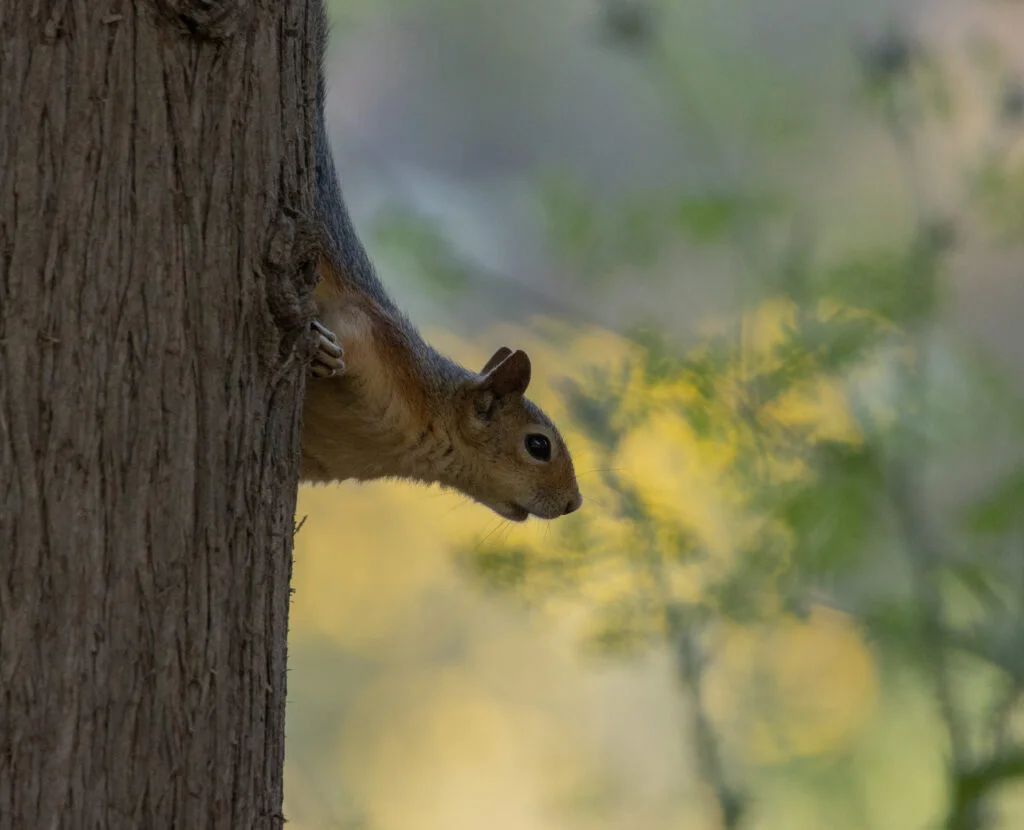
I had the pleasure of using Stylianos as a guide in Lesvos and Cyprus last Spring and was very happy for his help. We were entirely successful in locating my targets and the accommodations and dining he arranged were first rate. I would highly recommend his services to anyone seeking guiding in either location.
I was really pleased with my experience with this company. I came to Lesvos on a cheap deal with Jet2Holidays and booked a series of day trips in advance. We found most of the birds I was trying to find and Sytlianos was a great person to spend some time with. If you want to do a trip on your own or with one or two other people without the hassle of hiring a car, then look no further than Aegean Birding. They will collect you from your hotel in the morning after breakfast and everything is taken care of.
Social Media
©2023. Aegean Birding. All Rights Reserved.

- Ascension Island
- Tristan da Cunha
- Burkina Faso
- Central African Republic
- Congo Republic
- Côte d’Ivoire
- Equatorial Guinea
- Eswatini (Swaziland)
- Guinea Bissau
- North Sudan
- São Tomé & Príncipe
- Sierra Leone
- Eastern Cape
- KwaZulu Natal
- Northern Cape
- Northwest Province
- Western Cape
- South Sudan
- Western Sahara
- Afghanistan
- British Indian Ocean Territory
- Heilongjiang
- Inner Mongolia
- Andaman & Nicobar Islands
- Andhra Pradesh
- Arunachal Pradesh
- Chhattisgarh
- Himachal Pradesh
- Jammu & Kashmir
- Lakshadweep
- Madhya Pradesh
- Maharashtra
- Uttar Pradesh
- Uttarakhand
- West Bengal
- Indonesian Borneo
- Lesser Sundas
- Kuala Lumpur
- Peninsular Malaysia
- Sarawak & Sabah
- North Korea
- Philippines
- South Korea
- Timor-Leste
- Turkmenistan
- American Samoa
- Christmas Island
- Coral Sea Islands
- New South Wales
- Norfolk Island
- Northern Territory
- South Australia
- Western Australia
- Cocos Islands
- Cook Islands
- French Polynesia
- Marshall Islands
- New Caledonia
- Stewart Island
- Northern Mariana Islands
- Papua New Guinea
- Wallis & Futuna
- Netherlands Antilles
- Antigua & Barbuda
- Caribbean Netherlands
- Cayman Islands
- Dominican Republic
- El Salvador
- Puerto Rico
- Saint Lucia
- St Vincent & Grenadines
- St. Kitts & Nevis
- Turks & Caicos
- South Ossetia
- Republic of Croatia
- Bosnia & Herzegovina
- Auvergne-Rhône-Alpes
- Bourgogne-Franche-Comté
- Hauts-de-France
- Île-de-France
- Nouvelle-Aquitaine
- Pays-de-la-Loire
- Provence-Alpes-Côte d’Azur
- Baden-Württemberg
- Brandenburg
- Lower Saxony
- Mecklenburg-Vorpommern
- North Rhine-Westphalia
- Rhineland Palatinate
- Saxony-Anhalt
- Schleswig-Holstein
- Liechtenstein
- Lake Skadar
- Netherlands
- Central Russia
- Eastern Siberia
- Northwest Russia
- Russian Arctic
- Russian Far East
- South Russia
- Western Siberia
- Basque Country
- Fuerteventura
- Gran Canaria
- Castilla y Leon
- Castilla-La Mancha
- Extremadura
- Switzerland
- Avon & Bristol
- Bedfordshire
- Buckinghamshire
- Cambridgeshire & Peterborough
- Gloucestershire
- Greater London
- Greater Manchester
- Herefordshire
- Hertfordshire
- Isle of Wight
- Isles of Scilly
- Leicestershire & Rutland
- Lincolnshire
- Northamptonshire
- Northumberland
- Nottinghamshire
- Oxfordshire
- Staffordshire
- Warwickshire
- West Midlands
- Worcestershire
- Yorkshire – East
- Yorkshire – North
- Yorkshire – South
- Yorkshire – West
- Isle of Man
- Angus & Dundee
- Clyde Islands
- Dumfries & Galloway
- Isle of May
- Moray & Nairn
- North-east Scotland
- Orkney Isles
- Outer Hebrides
- Perth & Kinross
- Upper Forth
- Brecknockshire
- Caernarfonshire
- Carmarthenshire
- Denbighshire
- East Glamorgan
- Meirionnydd
- Montgomeryshire
- Pembrokeshire
- Radnorshire
- Vatican City
- Vancouver Island
- New Brunswick
- Newfoundland
- Northwest Territories
- Prince Edward Island
- Saskatchewan
- Aguascalientes
- Baja California
- Baja California Sur
- Mexico City
- Quintana Roo
- San Luis Potosí
- St Pierre & Miquelon
- Connecticut
- Massachusetts
- Mississippi
- New Hampshire
- North Carolina
- North Dakota
- Pennsylvania
- Rhode Island
- South Carolina
- South Dakota
- Rio Grande Valley
- West Virginia
- Buenos Aires City
- Buenos Aires State
- Santiago del Estero
- Tierra del Fuego
- Espírito Santo
- Federal District
- Mato Grosso
- Mato Grosso do Sul
- Minas Gerais
- Rio de Janeiro State
- Rio Grande do Norte
- Rio Grande do Sul
- Santa Catarina
- Easter Island
- Northern Ecuador
- French Guiana
- Saudi Arabia
- Farne Islands
- Birding Tour Companies
- Bird Fairs & Festivals
- Trip Report Repositories
- Weather & Tides
- Rarity Alerts
- Ornithological Journals
- Birding Magazines
- Websites with Mega-links
- Books for Birders
- Bird Book Publishers
- Software, DVDs, Recordings etc.
- Bird Writers
- Bird Art & Artists
- Digiscoping
- Photos, Photography & Photographers
- Webcams & Nestcams
- #12348 (no title)
- #11964 (no title)
- Bird Watching Books
- Bird Watching Telescopes
- Birdfeeders, Birdhouses etc
- Optics Retailers
- Optics Companies
- Outdoor Clothing for Birders
- Other Birding Equipment & Accessories
- Tripod Companies
- Banding or Ringing
- Study & Bird Behaviour
- Birders & Ornithologists
- Threatened & Extinct Species
- Conservation
- Ornithology Courses
- Identification
- Invasive Species
- Taxonomy & Bird Names
- Acanthisittidae – New Zealand Wrens
- Acanthizidae – Australasian Warblers
- Acrocephalidae – Reed & Brush Warblers Etc.
- Aegithalidae – Bush Tits
- Aegithinidae – Ioras
- Alaudidae – Larks
- Arcanatoridae – Dapple-throat & Allies
- Artamidae – Woodswallows, Butcherbirds & Currawongs
- Atrichornithidae – Scrub-birds
- Bernieridae – Malagasy Warblers
- Bombycillidae – Waxwings
- Buphagidae – Oxpeckers
- Calcariidae – Longspurs & Snow Buntings
- Callaeidae – Kokako & Saddlebacks
- Campephagidae – Cuckooshrikes, Cicadabirds, Trillers & Minivets
- Cardinalidae – Cardinals, Grosbeaks & Allies
- Certhiidae – Treecreepers
- Cettidae – Bush Warblers, Tesias & Allies
- Chaetopidae – Rockjumpers
- Chloropseidae – Leafbirds
- Cinclidae – Dippers
- Cisticolidae – Cisticolas, Prinia, Tailorbirds & Allies
- Climacteridae – Australasian Treecreepers
- Cnemophilidae – Satinbirds
- Coerebidae – Bananaquit
- Conopophagidae – Gnateaters
- Corcoracidae – Australian Mudnesters
- Corvidae – Crows, Jays, Magpies & Allies
- Cotingidae – Cotingas, Fruiteaters & Allies
- Dasyornithidae – Bristlebirds
- Dicaeidae – Flowerpeckers
- Dicruridae – Drongos
- Donacobiidae – Donacobius
- Dulidae – Palmchat
- Elachuridae – Spotted Wren-babbler
- Emberizidae – Buntings, New World Sparrows & Allies
- Erythroceridae – Yellow Flycatchers
- Estrildidae – Waxbills, Munias & Allies
- Eulacestomatidae – Ploughbill
- Eupetidae – Rail-Babbler
- Eurylaimidae – Broadbills
- Formicariidae – Antthrushes
- Fringillidae – Finches, Seedeaters, Euphonias & Allies
- Furnariidae – Ovenbirds
- Grallariidae – Antpittas
- Hirundinidae – Swallows & Martins
- Hyliotidae – Hyliotas
- Hylocitreidae – Yellow-flanked Whistler
- Hypocoliidae – Hypocolius
- Icteridae – Oropendolas, Orioles, Blackbirds & Allies
- Ifritidae – Blue-capped Ifrit
- Incertae Sedis – Uncertain Families
- Irenidae – Fairy-bluebirds
- Laniidae – Shrikes
- Leiothrichidae – Turdoides Babblers, Laughingthrushes, Barwings & Sibias
- Locustellidae – Grassbirds & Allies
- Machaerirhynchidae – Boatbills
- Macrosphenidae – Crombecs, Longbills & African Warblers
- Malaconotidae – Bushshrikes, Tchagras, Puffbacks & Boubous
- Maluridae – Australasian Wrens
- Melampittidae – Melampittas
- Melanocharitidae – Berrypeckers & Longbills
- Melanopareiidae – Crescent-chests
- Meliphagidae – Honeyeaters
- Menuridae – Lyrebirds
- Mimidae – Mockingbirds, Thrashers & Allies
- Mohoidae – O’os
- Mohouidae – Whitehead, Yellowhead & Brown Creeper
- Monarchidae – Monarchs, Paradise Flycatchers & Allies
- Motacillidae – Longclaws, Pipits & Wagtails
- Muscicapidae – Old World Flycatchers
- Nectariniidae – Sunbirds & Spiderhunters
- Neosittidae – Sitellas
- Nicatoridae – Nicators
- Notiomystidae – Stitchbird
- Oreoicidae – Australasian Bellbirds
- Oriolidae – Old World Orioles, Pitohuis & Figbirds
- Orthonychidae – Logrunners & Chowchilla
- Pachycephalidae – Whistlers & Allies
- Panuridae – Bearded Reedling
- Paradisaeidae – Birds-of-paradise
- Paramythiidae – Painted Berrypeckers
- Pardalotidae – Pardalotes
- Paridae – Tits & Chickadees
- Parulidae – New World Warblers
- Passeridae – Old World Sparrows
- Pellorneidae – Fulvettas, Ground Babblers & Allies
- Petroicidae – Australasian Robins
- Peucedramidae – Olive Warbler
- Philepittidae – Asities
- Phylloscopidae – Leaf Warblers & Allies
- Picathartidae – Rockfowl
- Pipridae – Manakins
- Pittidae – Pittas
- Pityriaseidae – Bristlehead
- Platysteiridae – Wattle-eyes & Batises
- Ploceidae – Weavers, Widowbirds & Allies
- Pnoepygidae – Wren-babblers
- Polioptilidae – Gnatcatchers
- Pomatostomidae – Australasian Babblers
- Prionopidae – Helmetshrikes
- Promeropidae – Sugarbirds
- Prunellidae – Accentors
- Psophodidae – Whipbirds, Jewel-babblers & Quail-thrushes
- Ptilogonatidae – Silky-flycatchers
- Ptilonorhynchidae – Bowerbirds & Catbirds
- Pycnonotidae – Bulbuls
- Regulidae – Goldcrests & Kinglets
- Remizidae – Penduline Tits
- Rhagologidae – Mottled Berryhunter
- Rhinocryptidae – Tapaculos
- Rhipiduridae – Fantails
- Sapayoidae -Sapayoa
- Scotocercidae – Streaked Scrub Warbler
- Sittidae – Nuthatches
- Stenostiridae – Fairy Flycatchers
- Sturnidae – Starlings, Mynas & Rhabdornis
- Sylviidae – Sylviid Babblers, Parrotbills & Fulvettas
- Tephrodornithidae – Woodshrikes & Allies
- Thamnophilidae – Antbirds
- Thraupidae – Tanagers & Allies
- Tichodromidae – Wallcreeper
- Timaliidae – Babblers
- Tityridae – Tityras, Becards & Allies
- Troglodytidae – Wrens
- Turdidae – Thrushes
- Tyrannidae – Tyrant Flycatchers
- Urocynchramidae – Przevalski’s Finch
- Vangidae – Vangas
- Viduidae – Indigobirds & Whydahs
- Vireonidae – Vireos, Greenlets & Shrike-babblers
- Zosteropidae – White-eyes, Yuhinas & Allies
- Accipitridae – Kites, Hawks & Eagles
- Aegothelidae – Owlet-nightjars
- Alcedinidae – Kingfishers
- Alcidae – Auks
- Anatidae – Swans, Geese & Ducks
- Anhimidae – Screamers
- Anhingidae – Darters
- Anseranatidae – Magpie Goose
- Apodidae – Swifts
- Apterygidae – Kiwis
- Aramidae – Limpkin
- Ardeidae – Herons, Egrets & Bitterns
- Balaenicipitidae – Shoebill
- Brachypteraciidae – Ground Rollers
- Bucconidae – Puffbirds
- Bucerotidae – Hornbills
- Bucorvidae – Ground Hornbills
- Burhinidae – Thick-knees & Stone Curlews
- Cacatuidae – Cockatoos
- Capitonidae – New World Barbets
- Caprimulgidae – Nightjars & Nighthawks
- Cariamidae – Seriemas
- Casuariidae – Cassowaries
- Cathartidae – New World Vultures
- Charadriidae – Plovers, Lapwings & Dotterels
- Chionidae – Sheathbill
- Ciconiidae – Storks
- Coliidae – Mousebirds
- Columbidae – Doves & Pigeons
- Coraciidae – Rollers
- Cracidae – Chachalacas, Curassows & Guans
- Cuculidae – Old World Cuckoos
- Diomedeidae – Albatrosses
- Dromadidae – Crab Plover
- Dromaiidae – Emu
- Eurypygidae – Sunbittern
- Falconidae – Falcons, Kestrels & Caracaras
- Fregatidae – Frigatebirds
- Galbulidae – Jacamars
- Gaviidae – Divers or Loons
- Glareolidae – Coursers & Pratincoles
- Gruidae – Cranes
- Haematopodidae – Oystercatchers
- Heliornithidae – Finfoots & Sungrebe
- Hemiprocnidae – Treeswifts
- Hydrobatidae – Northern Storm Petrels
- Ibidorhynchidae – Ibisbill
- Indicatoridae – Honeyguides
- Jacanidae – Jacanas
- Laridae – Gulls, Terns & Skimmers
- Leptosomatidae – Cuckoo Roller
- Lybiidae – African Barbets
- Megalimidae – Asian Barbets
- Megapodiidae – Megapodes
- Meropidae – Bee-eaters
- Mesitornithidae – Mesites
- Momotidae – Motmots
- Musophagidae – Turacos, Plantain-eaters & Go-away-birds
- Numididae – Guineafowl
- Nyctibiidae – Potoos
- Oceanitidae – Austral Storm Petrels
- Odontophoridae – New World Quails
- Opisthocomidae – Hoatzin
- Otididae – Bustards, Floricans & Korhaans
- Pandionidae – Ospreys
- Pedionomidae – Plains Wanderer
- Pelecanidae – Pelicans
- Pelecanoididae – Diving Petrels
- Phaethontidae – Tropicbirds
- Phalacrocoracidae – Cormorants & Shags
- Phasianidae – Pheasants, Grouse, Partridges & Allies
- Phoenicopteridae – Flamingos
- Phoeniculidae – Wood Hoopoes & Scimitarbills
- Picidae – Woodpeckers
- Pluvianellidae – Magellanic Plover
- Pluvianidae – Egyptian Plover
- Podargidae – Frogmouths
- Podicipedidae – Grebes
- Procellariidae – Petrels, Diving Petrels & Shearwaters
- Psittacidae – African & New World Parrots
- Psittaculidae – Old World Parrots
- Psophiidae – Trumpeters
- Pteroclidae – Sandgrouse
- Rallidae – Rails, Crakes, Gallinules & Coots etc.
- Ramphastidae – Aracari, Toucans & Toucanets
- Recurvirostridae – Avocets & Stilts
- Rheidae – Rheas
- Rhynochetidae – Kagu
- Rostratulidae – Painted Snipe
- Sagittariidae – Secretarybird
- Sarothruridae – Flufftails
- Scolopacidae – Woodcock, Snipe, Sandpipers & Allies
- Scopidae – Hammerkop
- Semnornithidae – Toucan Barbets
- Spheniscidae – Penguins
- Steatornithidae – Oilbird
- Stercorariidae – Skuas or Jaegers
- Strigidae – Owls
- Strigopidae – New Zealand Parrots
- Struthionidae – Ostriches
- Sulidae – Gannets & Boobies
- Thinocoridae – Seedsnipe
- Threskiornithidae – Ibises & Spoonbills
- Tinamidae – Tinamous
- Todidae – Todies
- Trochilidae – Hummingbirds
- Trogonidae – Trogons & Quetzals
- Turnicidae – Buttonquails
- Tytonidae – Barn & Grass Owls
- Upupidae – Hoopoes
- Big Days & Bird Races
- Apocryphal Birding Stories & Urban Myths
- Bird Humour
- Listing & Listers
- Twitching & Twitchers
- Hints & Tips
- Angling & Birds
- Gardening For Birders
- Birding Blogs
- Accessible Birding
- Birding Organisations
- Birds on Stamps
- Fatbirder’s Birding Advice
Birding Crete
Crete is the largest Greek island and lies a long way south in the eastern Mediterranean. Spring and Autumn migrants and winter visitors use the island and it has a good range of resident birds, such as Griffon Vulture, Bearded Vulture, Bonelli’s Eagle, Ruppell’s Warbler and Red-billed and Alpine Chough.
This mainly limestone island is about 250 Km long and is almost like a miniature continent with many mountain ranges, gorges, coastal fields, beaches, seasonal rivers and pools and even high mountain deserts. All these habitats mean that birding is very varied with residents like Griffon Vultures, Bearded Vulture, Golden Eagle, Peregrine, Buzzard, Kestrel, Cetti’s Warbler, Sardinian Warbler, Chaffinch, Great Tit, Blue Rock Thrush, Fan-tailed Warbler (Zitting Cisticola). Stonechat and Crested Lark and Italian Sparrow are fairly common.
In the uplands on the plateaux and gorges there are Cirl Bunting, Alpine & Red-billed Chough, Woodlark and Black–eared Wheatear. Winter visitors arrive from November to end of March and Kingfisher, Bluethroat, Starling, Robin and Black Redstart over winter. Spring passage begins in late March to May and Pied, Collared and Semi-collared Flycatchers, Wood Warbler, Northern Wheatear, Golden Oriole, Grey and Purple Heron, Night Heron, Little Egret, and Little Bittern, Little Crake and Bee-eaters pass through. Autumn passage begins in late August through September and October when Whitethroat, Red-backed Shrike, Garganey, Mallard pass through. Eleanora’s Falcon are nesting and Harriers and smaller Eagles follow the east coast south to Africa.
Getting There The main airport is at Heraklion on the north coast. Flights direct to Crete by charter aircraft from April to October and daily on scheduled flights via Athens. Crete offers a huge range of accommodation from self-catering apartments through small hotels to large hotel complexes, which are open all year. Transport systems are a good local and town-to-town bus service at a reasonable price and car and motorbike and bicycle hire are available. Most of the northern coast has tourist development and could be used as a base, but the central mountains, the south and the east coasts are more attractive.
As the island is largely dry due to the geology, then river mouth pools, small wetlands and spring pools from underground water are very important for birds. The largest reservoir is at Bramiana to the NE of Ierapetra, the largest town on the south coast. Here there are good roosts of gulls and ducks in winter, and passage waders, birds of prey like Eleanora’s and Red-footed Falcon and interesting birds like Black-winged Stilt, Glossy Ibis, Garganey and Green and Wood Sandpipers.
The rivers tend to run dry by the end of May but in April and May. They are fed by melt water from the snow in the high mountains.
The Aposelemis river and Gouves lagoons on the north coast off the old coast road east of Iraklion to Hersonissos are a real hot spot for migrants and breeding birds and regularly attract Little Crake, Garganey, Black-winged Stilt, Purple Heron, Greater Flamingo, Short-toed Lark, Stonechat, Woodchat Shrike, Little Stint, Wood Sandpiper, Buzzard, Kestrel, Griffon Vulture, Little Egret, Northern Wheatear, Black-eared Wheatear in the Gorge behind the site. The bird list is 150+. This cannot be truthfully described as one of Crete’s beautiful spots due to rubbish dumping, the Gouves football pitch and the general air of neglect, but the birds are blind to this and are feeding up frantically before moving on to breed further north. Rarities from Richard’s Pipit to Sociable Plover have turned up here.
The Tavronitis river mouth also attracts similar birds as well as Osprey and lies to the west of Chania and the western side of Maleme. There are other river mouths to check out along the north coast.
Agia Reservoir to the SW of Chania is another small gem. The reservoir is fed by the Great Springs of Ayia, which bring huge amounts of cold underground water to serve the town of Chania. The dam and pumping station are situated on two banks of this reservoir and the other banks are backed by reeds, Marsh Harrier, Reed Warbler, Moustached Warbler, Wood Warbler, Swallow, Red-rumped Swallow, House and Sand Martin, Swift, Alpine Swift, Little and Baillon’s Crake and Yellow Wagtails.If you explore into the mountain ranges and plateaux you will find a wealth of beautiful spots.
The south coast has a steep descent to the sea as Crete really is the top of a mountain range, but there are good beaches at Plakias and Frangocastello that are also good birding areas.
Other Taxa For botanists the island is a delight and there are wonderful displays of Mediterranean flowers and orchids. There are endemic butterflies such as Cretan Argus and Cretan Festoon, as well as a wide variety of others.
Target Birds: Bearded Vulture: 10-15 pairs sadly with poor breeding rates. Rûppells Warbler, breed in the locally common areas on the south side of the island. They favour slopes with Yellow Spiny Broom- Calicotome villosa. Griffon Vultures are common in small colonies in the gorges. Lanner Falcon may breed in the sea-level gorges and Bonelli’s Eagles also breed in the mountain gorges. Crete has a hundred gorges. Ortolan Bunting breed in the southern mountains on dry slopes and Cirl Buntings prefer the mountain plateaux.
Ayia reservoir - near Chania
Frangocastello, georgioupolis lake, kedros foothills - near spili, kourtaliótiko and kotsiphos gorges, lake kournas, moní préveli, chris durdin.
Stephanie Coghlan
Number of bird species: 367

A Birdwatching Guide to Crete
Birds and mammals of crete, english spellings of greek place names are reliably inconsistent on crete, natural history museum of iraklion -, greek birds committee.
Abbreviations Key
Important Bird Areas
Np lefka ori (samaria), natural parks of crete, nup psiloritis natural park, 2010 - natural born birder - birding crete, 2011 [04 april] - alison parnell, 2011 [04 april] - honeyguide, 2012 [04 april] - bob shiret - rethymnon, 2012 [04 april] - chris gibson, 2012 [05 may] - leo tukker, 2013 [04 april] - chris durdin, 2014 [04 april] - tim strudwick, 2015 [04 april] - chris durdin, 2015 [06 june] - tony benton, 2016 [04 april] - chris durdin, 2017 [04 april] – david collins, simply crete, crete birding.
Fatbirder - linking birders worldwide... Wildlife Travellers see our sister site: WAND

Northern Greece – Lake Kerkini in Spring
Beautiful Lake Kerkini lies in the north of Greece, only one hours drive from the city of Thessaloniki. Lake Kerkini is a pear shaped fresh water lake, fed by the Strymon River and is about fifteen kilometres long and nine kilometres across, when full and an embankment allows for raised viewing at several key strategic areas. The lake and the surrounding wetlands are bordered by the Kerkini Mountains to the north and the Marvovouni Mountains to the south. The area is well known for its biodiversity and is considered one of Greece’s most important wetlands, which is recognised by its RAMSAR status. This exciting tour follows on from the success of our recent early winter visits to the area and we will once again be based at the delightful Viglatoras Hotel just a short distance from the lake. In spring, this rich wetland area is on a major migration flyway for vast numbers of birds heading north to breed in Eastern and Northern Europe, and as such offers some fabulous birding opportunities without the crowds of some of the better known island destinations.
The terrain is mostly easy and there is little walking as we bird from tracks or roads in most locations. Waterbirds are high on the menu with breeding colonies of all the European herons and egrets, Glossy Ibis and Dalmatian Pelicans, which we will get up close to with a boat trip on the lake. Pygmy Cormorants can be found in large numbers and muddy margins can host a range of passage species such as Marsh, Terek & Broad-billed Sandpipers, Temminck’s Stint, White-winged Black and Whiskered Terns and Collared Pratincole. Passerine migration will still be underway and we will search the woodland and scrub for prize species such as Black-headed Bunting, Icterine, Great Reed, Eastern Subalpine, Wood and Eastern Orphean Warblers. Woodpeckers could feature too with a great chance of Grey-headed, Middle Spotted, Syrian and Black, while we will check rocky areas for Western Rock Nuthatch and Sombre Tit. With so many waterbirds, and such pristine forested hills adjacent to the lake, its no surprise that raptors also feature highly – Lesser Spotted, Short-toed, Booted and Golden Eagles, flocks of Red-footed Falcons, European Honey Buzzard and Levant Sparrowhawk all being likely. Spending a full day in the mountains, we also have an outside chance of catching up with one or two scarce species such as Spotted Nutcracker, Semi-collared Flycatcher and Rock Partridge. You can expect a whopping 170+ species on this highly diverse tour to Europe’s best up and coming destinations.
Kerkini Spring 2016
Kerkini Spring 2018
Greece Spring 2019
Kerkini May 2022
Kerkini May 2023
“Thanks for yet another amazing trip”
P.L & V.R, Hertfordshire
“Everything about this trip exceeded expectations. The hotel, the birding, the food, the leaders and the lake”
D.B & A.H, Essex
“This was my first bird trip and as the novice I really appreciated your patience and taking the time to treat me as a full member of the group. I think you and Paul achieved a good team dynamic which helped to make the week so enjoyable”
J.S, Surrey

Tour at a glance
Similar tours.

Bulgaria – Brilliant Balkan Birding!

Romania – Danube Delta & Dobrogea Plain
Latest tweets.
Oriole Birding Follow
Oriole Birding is a UK based birdwatching tour company specialising in small group holidays throughout the UK and to over 30 countries worldwide
There were some superb male Snow Buntings at Cairngorm car park this morning, one of the highlights of the day for our Speyside group along with Golden Eagles, Mountain Hare, Slav Grebes and Ring Ouzel More on the blog: https://www.oriolebirding.com/category/birding-diary/
Join our Newsletter

Don’t miss our latest offers, news and availability! To subscribe to our newsletter, simply follow the link below and you will automatically receive our next issue by email, as well as any news on fact finding tours not listed in our main programme. Past newsletters can be viewed by clicking here .
ATOL Protected

All the flights and flight-inclusive holidays on this website are financially protected by the ATOL scheme. When you pay you will be supplied with an ATOL Certificate. Please ask for it and check to ensure that everything you booked [flights, hotels and other services] is listed on it.
Please see our booking conditions for further information or for more information about financial protection and the ATOL Certificate click here .

Lesvos, Greece: Migration!
April 28 - May 5, 2024
- Full Itinerary
- Photo Gallery
Travel Details
- Trip Reports
- Know Before You Go
- Other Trips You May Like
The beautiful Greek island of Lesvos is the place to be to witness the spectacle of Europe’s spring migration. This is the “Point Pelee” of Southern Europe for birds returning from their winter in Africa. Birding on a Greek island … is this real? Unpack once, set your watch to island time, and fill your day with birds! From the little town of Skala Kalloni, we explore the island’s varied countryside, historic villages, and friendly people. This is the third largest island of the chain (large enough to have extensive pine and hardwood forests), much less visited than the other islands, and a place people describe as feeling like the “real Greece.” Meals here are a true bonus to the birding. Whether searching out the island’s special birds, like Krüper’s Nuthatch and Cinereous Bunting, or marveling at the continual stream of fabulous birds, there is no shortage of memorable sightings. We also take time to enjoy some of the island’s 70 species of orchids. Weather always plays a part in the spectacle of migration. With clear skies and fine conditions, birds may fly over the island and we spend time looking at the resident European birds and shorebirds. If there are winds or storm fronts, we may have incredible “falls” of birds. Either way, birding Lesvos is a fantastic experience. From the slopes of Mount Olympus, to the island’s sparkling rivers and lakes, to picturesque fishing villages alongside beautiful golden beaches, we witness landscapes that have inspired artists for many years. And, best of all, your visit is timed with the birds!
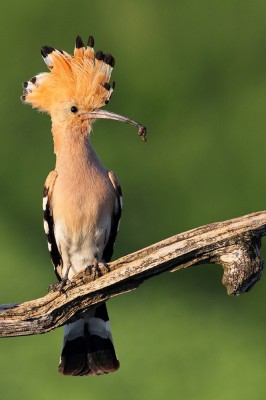
Tour Highlights
- Relax, and unpack once at our comfortable and eco-friendly hotel
- Plenty of terns and waders on the pond right next to our hotel
- In salt pans see Pallid Harrier, European Roller, Little Owl, and dozens of Red-footed Falcon
- Explore nearby sheep fields for Short-toed, Golden or even Lesser or Greater Spotted Eagles
- Watch for rare Cinereous Bunting on Lesbos’ volcanic western side
- Eat lunch at Ipsilou Monastery, built in 800 AD and a good place to see migrant fallouts
- Explore around the town of Sigri looking for hundreds of shrikes and buntings in the shadow of a pretty Turkish castle
- Walk the eastern side’s pine forests for Krüper’s Nuthatch
- Enjoy pre-breakfast walks to a nearby pond for Little, Spotted, and Baillon’s Crakes
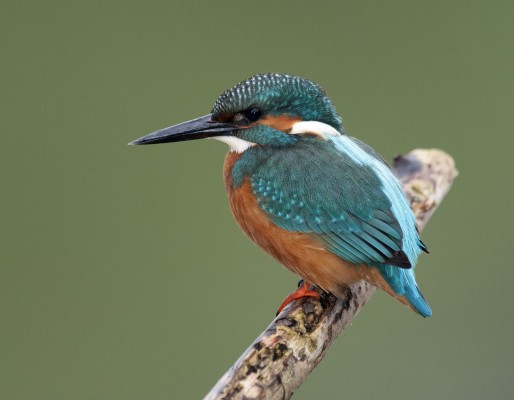
Trip Itinerary
Itineraries are guidelines; variations in itinerary may occur to account for weather, road conditions, closures, etc. and to maximize your experience.
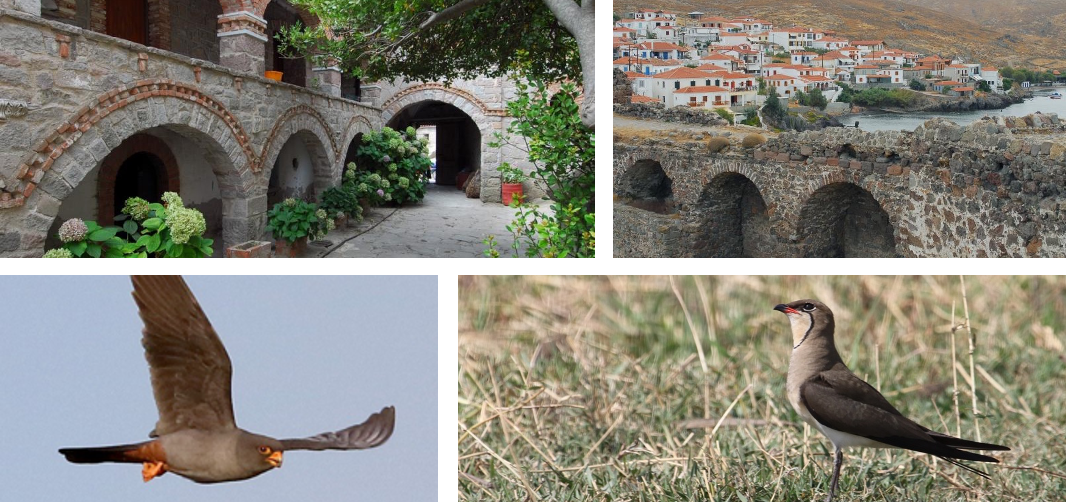
Sun., April 28: Arrival in Lesvos
Welcome to Greece! Arrive today in Mytilene, the capital of Lesvos. Also known as Lesbos, this 600+ square-mile island in the Aegean Sea is renowned for its ancient history, incomparable natural beauty, and tradition of hospitality. You may wish to arrive early to take in the capital’s fabulous art museum and to appreciate the local shops and galleries. Mytilene is a city on seven hills, crowned by a castle, and is a manageable size to explore. Home to the University of the Aegean, there are concerts, cafes, a lively market, and waterfront. After your arrival, we make our way to the small fishing village of Skala Kalloni, the base for our tour. If we have time before dinner we take a short walk to see how the spring migration of countless birds is progressing. Our hotel is perfectly located beside wonderfully bird-rich habitats, includes a reed-fringed pool right next to the hotel, which can be a magnet for water birds and marsh terns. Accommodation at Kalloni Bay Hotel (D)
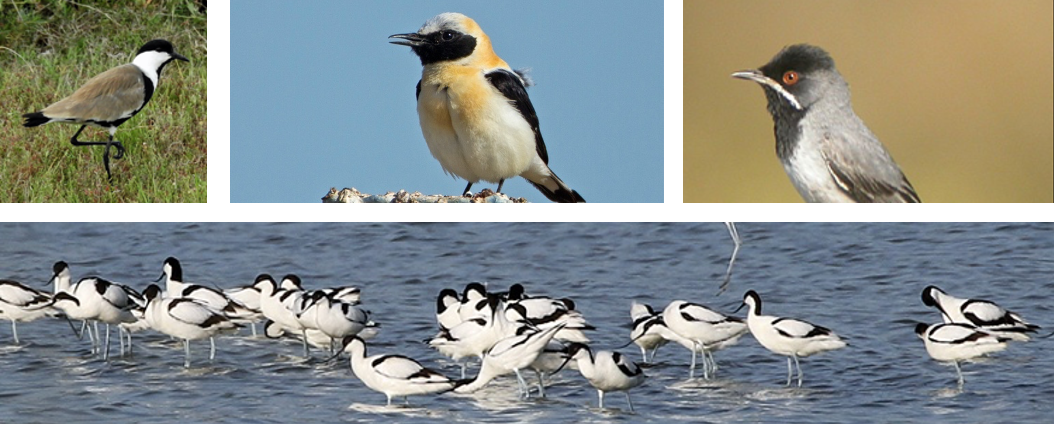
Mon., April 29 – Sat., May 4: Birding & Exploring Lesvos
Skala Kalloni is a classic fishing village, known for its sardine fishery. Its rich agricultural valley is backed by thousands of olive trees on the hills, and like Canada’s Point Pelee, birdwatchers gather here from all over the world. This is the perfect location from which to explore this wonderfully scenic island; we can enjoy short drives to a variety of habitats that attract overwhelming numbers of migrants! If conditions are right you can witness breathtaking numbers of birds and it is not unusual to see hundreds of Red-backed Shrikes and Black-headed Buntings, or up to fifty Red-footed Falcons perched along telegraph wires. From the moment you step outside the hotel door you are in bird heaven! The pond beside our hotel can be alive with Whiskered, White-winged, and Black Terns hawking insects just a few meters in front of us. A further search of reedy edges can produce Glossy Ibis, White Stork, Little Bittern, Squacco Heron, Garganey, Black-winged Stilt, and occasionally something more unusual such as Great Bittern, Great Snipe, or Spotted Crake. Streams of Barn Swallow can often be accompanied by a few Red-rumped Swallow, Sand Martin, and wheeling flocks of Common Swift that could have Alpine and Pallid among them. Yellow Wagtail of several very distinct races, including the very smart Black-headed, vie for our attention, while Spanish Sparrow, Turtle Dove, and a raptor or two make the first hour of birding all you had hoped for. Skala Kalloni is perched on a wide bay with views of two mountain ranges. All week, we only have short distances to travel with some of the best birding sites literally on our door step. The east and west rivers with their weedy Tamarisk-lined banks can hold a whole host of interesting species. Depending how shallow the river is, it can attract endless numbers of European Bee-Eater, waders including Wood Sandpiper, Green and Common Sandpiper, Little Ringed Plover, Ruff, Temminck’s and Little Stint, Squacco Heron, White and Black Stork, Little and Great Egret, Black-crowned Night-Heron, Gull-billed Tern, and the elegant Ruddy Shelduck. Along the edges, we can look for Common Nightingale and Eastern Olivaceous, Great Reed, and Cetti’s Warblers. Sometimes we get Savi’s and River Warblers here and by the end of the week, the superb Black-headed Bunting and flocks of dazzling European Bee-Eaters have appeared. Between the East River and the nearby saltpans, several arable fields can attract flocks of Marsh and Montagu’s Harriers and occasionally we see a few ghostly Pallid Harrier, as well as gorgeous groups of Collared Pratincole, Lesser Gray and Woodchat Shrikes, European Roller, Little Owl, and up to fifty Red-footed Falcon. Crested Lark and Corn Bunting are common and the area always holds a surprise or two. The saltpans yield many more wading birds with Wood Sandpiper being the most common, along with elegant summer plumaged Marsh Sandpiper, stunning plum-colored Curlew Sandpiper, close views of Temminck’s and Little Stints, Kentish Plover, huge flocks of Ruff, Spotted Redshank, Pied Avocet, Little Gull, Spoonbill, Greater Flamingo, and the motionless Stone Curlew. Over the years, groups have seen Dalmatian Pelican, Spur-winged Plover, Cream-colored Courser, Black-winged Pratincole, and Caspian Plover … so once again we could have a nice surprise! This area is also traditionally a good spot to see the attractive Ruddy Shelduck. The surrounding sheep fields can hold flocks of Greater Short-toed Lark, Tawny Pipit, Citrine Wagtail, and Red-throated Pipit with beautiful brick-red throats. Up to four races of Yellow Wagtail keep us working hard and we constantly keep an eye out for raptors and terns passing overhead. This is a great place for seeing some of the more unusual species such as Caspian Tern, Lanner Falcon, Short-toed Eagle, Honey Buzzard, Golden or even Lesser or Greater Spotted Eagle. Heading inland from the salt pans, we can drive into a beautiful wooded valley full of oaks and olive trees. It is here that we should see our first Masked Shrike, Sombre Tit, Middle-spotted Woodpecker, Pied Flycatcher, Long-legged Buzzard, or even a Rufous Bush Robin. As Hoopoe lazily drift by and Golden Oriole fill the valley with their flutey calls we look for the shy and difficult Olive Tree Warbler, a bird that is a late arrival and only really possible toward the end of our stay. We also explore the wild rocky north coast, making a few stops to look for breeding Ruppell’s Warbler and Eastern Orphean and Bonelli’s Warblers, plus Blue Rock Thrush, Black-eared Wheatear, Peregrine Falcon, Goshawk, Crag Martin, Rock Nuthatch, Alpine Swift, and along the coastline the rare Audouin’s Gull, and flocks of Yelkouan Shearwater with even the possibility of the potential “new” Scopoli’s Shearwater. With views of the Turkish coast in the distance, this area sees many migrants leaving the island and a nearby inland lake can be a great place to find Ortolan Bunting, Hobby or something a little unusual such as Thrush Nightingale, Rufous-tailed Rock-Thrush, Great-spotted Cuckoo, or the rare White-throated Robin. The western side of the island with its arid volcanic hillsides is home to one of the birds everyone wants to see: the rare Cinereous Bunting. Lesvos is one of the best places in the world to see this little-known species, and we hope to find them singing from the rock strewn hillside. Here too are Cretzschmar’s Bunting, Rock Sparrow, Isabelline and Black-eared Wheatears, Blue Rock Thrush, and more chances for Rock Nuthatch. We learn a bit about the local geology here, too, including the local petrified forest. Ipsilou Monastery is one of our favorite picnic stops; set on top of a small hill we can enjoy superb views of the west coast. Dating from 800 AD, it is the oldest monastery on the island, with tall walls and arched gates. If weather condition are right, this spot receives amazing falls of migrant birds; we saw a flock of 27 Levant Sparrowhawks very low over our heads on one tour and often get Honey and Long-legged Buzzard and Short-toed Eagle. The surrounding trees and bushes can hold Collared, Spotted, and occasionally Semi-collared or Red-breasted Flycatchers, Golden Oriole, Chukar, Wood Lark, and Wood, Eastern Bonelli’s, Icterine, Barred, and other warblers. This is also a good spot for butterflies with Southern Festoon nearly always present. The west coast itself especially, around Sigri, is a very fertile area that can be exceptionally good for migrants with incredible numbers present on a good day. The village is marked by a Turkish Castle at the harbor, built in 1746. It’s not unusual to see hundreds of shrikes or buntings and careful searching can reveal Wryneck, Great Snipe, Levant Sparrowhawk, Collared Pratincole, Great Reed Warbler, and Lesser Gray Shrike, while flocks of Red-footed Falcons and Lesser Kestrels hunt over the fields. Lesvos is very rich botanically, with two species of pine, as well as oaks, laurels, rhododendron, chestnuts, and other tree species. The island’s proximity to Asia Minor (Turkey) and complexity of microhabitats in the mountainous terrain create biodiversity. The Persian Squirrel is a notable mammal. Weasels, foxes, and hares are here, and in the wetlands, otter. The pine forests on the eastern half of the island hold the other star bird: the diminutive but delightful Krüper’s Nuthatch. It is not always easy to see, but we make a special effort to catch up with this highly localized bird, which is on the western edge of its range here. In addition to the nuthatch, we can also find Short-toed Treecreeper, Serin, Woodchat Shrike, and some very good flowers including many species of orchid. Another area where we traditionally take a pre-breakfast walk, is around a small pond where Little Crake and sometimes Spotted and Baillon’s Crake can be seen very well. There are often a few Black-crowned Night-Heron and Squacco Heron to be seen, while Red-rumped Swallow pose on the reed tops where they have spent the night. Reed, Sedge, and Great Reed Warblers can certainly be heard, and we will search for Savi’s and possibly River Warbler, as well as Little Bittern. This is a magical place for photography in the early morning light. Birding this beautiful unspoiled island is not the only thing that will have you wanting to return. The setting is stunning, wildflowers and butterflies abound, and the sense of history we find while wandering is magical. Accommodation at Kalloni Bay Hotel (B, L, D)

Sun., May 5: Departures
After some morning birding, we depart the area and head back to Mytilene for international flights out. (B)
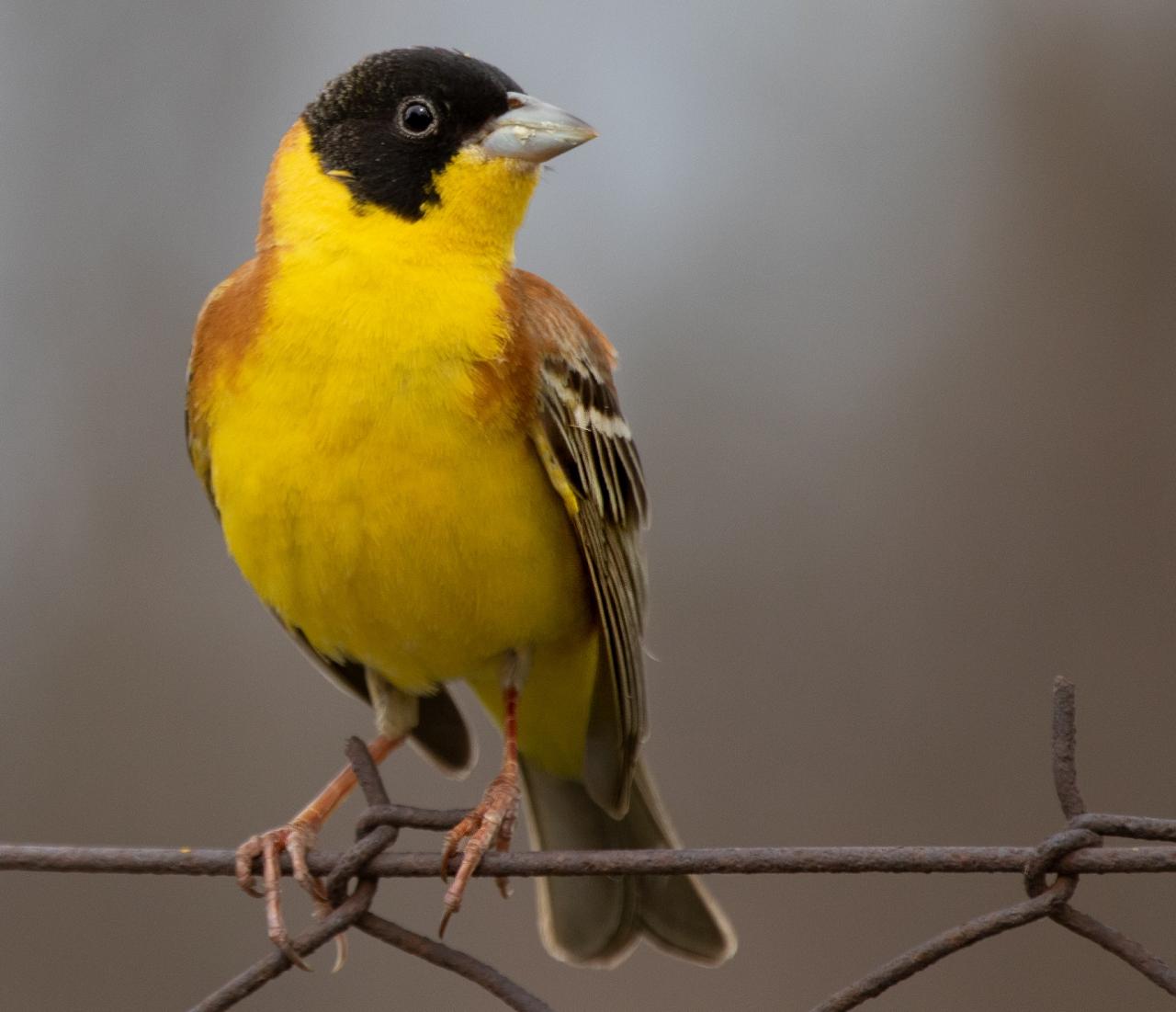
Cost of the Journey
Cost of the journey (main tour) is $3790 DBL / $4285 SGL, from Mytilene, Greece. Tour cost includes all accommodations, meals as specified in the itinerary, professional guide services, other park and program entrance fees and miscellaneous program expenses. Tour cost does not include: round-trip transportation from your home city to Mytilene, optional activities, or items of a personal nature like laundry, telephone charges, maid gratuities, or beverages from the bar.
Please plan to make air travel plans only after the minimum group size has been met. We will send you a confirmation email as soon as the trip has been confirmed.
Arrival and Departure Airport: Mytilene International Airport (MJT)
Arrival Details: Plan to arrive April 28, no later than 2:00 PM.
Departure Details: Plan to depart May 5, at your leisure.
Travel Tips: If you arrive early to rest up from your travels, we recommend the Theofilos Paradise Boutique Hotel . It’s located right in the middle of the old Mytilene town and steps away from the harbor and market area. We can pick you up at this hotel on the first day of the tour. If you’re interested in exploring the capital city of Mytilene, there are plenty of things to do! One of the most popular things to see is the Castle of Mytilene, built in the 6th century. It’s one of the largest castles in the Mediterrean and has amazing views of the Aegean Sea. If you’re a history buff, then you must visit the Archaeological Museum of Mytilene. Exhibits feature a collection of floor mosaics dating to the 2nd century and a vast collection of sculptures from various periods in history. Does shopping or trying a local café sound more appealing? Then head down to the harbor area for a stroll along the waterfront with many shops and restaurants. All of these attractions are within walking distance of the Theofilos Paradise Boutique Hotel, but taxis are also available.
- Visas are not required of US citizens for stays of this length. Expected changes to entrance requirements in Europe have been delayed until 2025. More information is available at European Travel Information and Authorization System (ETIAS) website .
Items of Note
Tour Pace This is a standard birding tour with regular birding walks. We usually break the day into two parts with a pre-breakfast excursion, followed by a full day out with picnic or taverna lunch. Weather can be unsettled; expect everything from bright and sunny weather to some cooler weather with the chance of an odd shower so prepare for all eventualities.
Browse below for trip reports and species lists from past versions of this and other tours from this destination.
- Species List
- Trip Report

James brings some twenty five years of guiding experience to Naturalist Journeys. Originally from Sheffield in the United Kingdom, he discovered a love for guiding in Israel in 1995 where he helped establish the Kibbutz Lotan Center for Birdwatching in the Southern Arava Valley. Since then, he’s led hundreds of tours throughout the Northern Hemisphere for a number of UK-based tour companies. His trips to Israel and North America are especially close to his heart but he’s also led or co-led tours to Mexico (Veracruz), The Gambia, Kenya, Iceland, Scottish Highlands, Spanish Pyrenees, Central/Southern France, Greece (Lesvos), and India (Goa). An accomplished illustrator, James placed runner-up in the British Birds “Bird Illustrator of the Year” competition in 1992 and went on to have his work published in numerous birding magazines and journals. He also co-authored the two volume set A Guide to the Birding Hotspots of Israel (Published in 2000 by the Israel Ornithological Center and the S.P.N.I.). He returns to Israel every year to lead trips and remains an active member of the Israel Rarities and Distribution Committee. When not leading tours he can be found at home in Western Massachusetts with his wife Susannah and their young son Matan.
Other trips with James P. Smith
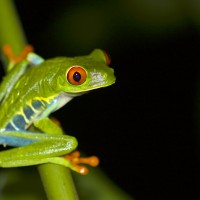
Essential Information +
This information is important for being prepared for your journey; we want you to have the best experience possible. If you only read one section, this one is key!
Ahead of Your Tour
- Make sure your passport is valid for six months AFTER your return date from Greece. The passport must have at least six months validity remaining to be allowed entry.
- Please check current CDC recommendations for travel to Greece and consult with your doctor about general travel vaccinations you should have as precaution for travel. See the “General Health and Inoculations” section below.
- Travel insurance in case of serious medical emergency is strongly recommended. Full health coverage and repatriation is available through Allianz Travel Insurance .
- Plan your flight reservations arriving into and out of Mytilene International Airport (MJT). Send a copy of your itinerary to the Naturalist Journeys office please.
- Soft sided luggage/duffel bags are easiest for packing the vans. Pack essential medications in your carry-on luggage, as well as one day of clothing and optics in case of luggage delay.
Arrival in Mytilene International Airport (MJT)
Please note: If you are delayed in travel, please refer to your emergency contact list, and contact your ground operator , with a copy to our office. You may also phone or text your guide. Quite a few of your guides will set up a WhatsApp connection so you can also reach your guide by phone.
Please plan to arrive by mid-afternoon on your tour start date. We have about an hour or so drive to the hotel, and may make some birding stops. Your emergency contact / hotel list (to be sent ahead of departure) will be helpful at Immigration when they ask where you are going. We will let you know the pickup arrangements a few weeks before the tour.
If you arrive early and plan to rent a car, an INTERNATIONAL driver’s license is required in Greece.
Please check the Travel Details section of this tour for additional information and updates.
Departures from Mytilene International Airport (MJT)
We will return to Mytilene on your tour end date in time for flights out – our group shuttles will be in the morning, if you depart later than mid-day from Mytilene, enjoy some local birding and you can taxi back to the airport later in the day.
A Passenger Terminal Facility Charge is levied on all passengers leaving Greece at ticket issuance or at airport of departure in Greece. Check with your airline to see if this has been included in your fare.
Passports, Visas & Documents
U.S. and Canadian citizens need a valid passport with an expiration date extending at least 6 months beyond the date of reentry . We advise having at least one blank passport page for entry stamps.
It is recommended to check for changes 60-90 days before your tour departs but, at the time of writing, a tourist visa is not required of US citizens for stays of this length. Requirements requiring visitors from more than 60 visa-free countries (including the U.S.) to get a travel authorization when entering Europe for brief stays have been delayed until 2025. Learn more at European Travel Information and Authorization System (ETIAS) website .
You may also visit the U.S. International Travel Information for Greece website .
As a precaution for lost or misplaced important documents that you are carrying with you (including, but not limited to, your Passport, visa, luggage barcodes, even credit cards), we highly recommend you bring color copies as a backup and leave copies with your emergency contact person at home. If not photos or PDF scans stored on your phone, then at least color copies stored in a separate location from your originals. Exercising this precaution will expedite the process of replacement and recovery as well as reducing the stress, inconvenience and costs that losing these items would cause.
General Health & Inoculations Information – Be Prepared!
We will share your health information with your guide. This information will be kept confidential but is very important as we want to be best prepared in case of medical emergency.
Vaccinations: The CDC recommends that all travelers be up to date with routine vaccinations and basic travel vaccines (such as Hepatitis A and Typhoid) before traveling to any destination. Please check with your doctor for recommendations at least 4-6 weeks before departing on your trip. Check the Centers for Disease Control & Prevention (CDC) website for Greece for other helpful information or reach them by phone at (800) CDC-INFO (800-232-4636). Consider bringing copies of your vaccination records with you.
Prescriptions: It is a good idea to pack any meds you take regularly in your carry-on luggage. Bring an extra pair of glasses or contact lenses. Bring an adequate supply of any prescription medications you use, a copy of the prescription and a list of generic names of your medicines as “back-up” in case it is necessary to purchase drugs while abroad. You’ll want to keep medications in their original, labeled containers.
Allergies: To be prepared for environmental triggers to allergies or breathing difficulties, please bring your allergy and/or asthma medication(s). If you have severe allergies talk to your doctor about carrying an EPI pen and notify your guides. It is also recommended to carry with you an up-to-date record of known allergies, chronic medical problems and Medic Alerts so that, if necessary, emergency treatment can be carried out without endangering your health.
Common Ailments: We recommend that you bring a travel-sized first aid kit and a supply of standard over-the-counter medications for prevention or treatment of common ailments (such as diarrhea, constipation, stomach upset, cough, congestion, head or body aches, insect bites and sunburn); as well as ointments, moisturizer, sunscreen, oral rehydration salts, band-aids, moleskin for blisters, cotton swabs, nail clippers, and tweezers, etc.
Altitude sickness: It can affect some and, if there is a concern, be prepared. The most general symptoms are headache and occasionally fatigue and dizziness. You’ll want to take it easy, particularly at first. These symptoms can be reduced by resting, drinking plenty of water and taking aspirin. If you have worries about the altitude, ask your physician about medications that may be right for you.
Daily Itinerary
We have no fixed itinerary once we arrive in Lesvos as this tour is during the prime migration time. As such, we need to remain very flexible. We will visit many different areas and birdwatching sites during the course of the trip and several we may return to time and time again. You will be briefed at breakfast on where we will be going for the day once we have determined the weather situation! Realistically and for maximum flexibility, we recommend you make the same preparation each day as far as gear to bring etc., so we have maximum flexibility. It is entirely possible that we will change our itinerary mid-day so be open and ready for that!
Most days will start with an optional pre-breakfast excursion lasting 1-2 hours to one of the many excellent birding spots close to the hotel. After breakfast we will usually head out for the day, and provided the weather is fine, we will have a picnic lunch at one of the numerous interesting and attractive places on the island. Generally, we will be out birding until about an hour before dinner/log call at around 8 PM.
The tour is not a strenuous one but in a couple of places we will walk on stony ground and up rocky valleys. Leisurely walks of up to 1km over easy terrain will be all that is required. We may predict our itinerary the night before but decide each morning.
Weather & Climate
Average temperatures are highs 75°F (24°C)/ lows 59°F (15°C) during our trip. Lesvos has a pleasant Mediterranean climate, which gives the island plenty of warm sunshine and not much of a chance of rain. The weather, of course, is unpredictable and a range of clothing should be packed. The temperatures can be in the 80s while it can be decidedly cold first thing in the morning. Dress in layers and always have rain gear and you should be fine!
Food & Drinks
Greek cuisine is considered to be very healthy and provides a delicious experience for travelers! Please advise us as soon as possible of your dietary preferences or restrictions. If there is anything you particularly don’t like to eat, it is useful for us to know. With enough advanced notice we are usually able to accommodate most special requests. In the hotel, meals are mostly served buffet style, so you have many choices. If you have dietary restrictions, it is best to ask servers for the appropriate information about the food. We appreciate your flexibility and openness to the new and foreign foods that you may experience on this trip.
As with any travel, minor intestinal problems are possible, so we suggest bri nging a remedy for traveler’s diarrhea. Please discuss appropriate medication with your physician.
Tap water is not considered unsafe, however, if you prefer to drink bottled water, you can purchase it at the hotel. Tap water is okay to use for brushing your teeth. On particularly hot days be sure to increase your intake of fluids.
Packing, Clothing & Laundry
Please, pack light and carry your medication, airline tickets, passport, visa, binoculars, camera, and other essential items in your CARRY-ON.
Please note that that luggage will be transported with you in the vehicles. Only bring luggage that you can comfortable carry yourself. Soft luggage is much easier to pack in the vehicle than more rigid hard-sided pieces. So, if you have the choice, please use soft luggage. Be sure to have your name, address, and itinerary on the inside of the bag, as well as a luggage tag with your name on the handle. It is recommended that you limit yourself to one checked suitcase and it is wise to check with your air carrier on luggage restrictions before your fly. Please remember that your carry-on bag must be able to fit under the seat. You will want a daypack for field trips, so this is the ideal carry-on.
Dress is very informal and comfortable throughout the trip. You may wish to change for dinners, but casual dress is suitable at all locations. Dressing in layers is the best way to be comfortable. Lightweight, long sleeve shirts and long pants make ideal field clothing as they are more protective from sun and vegetation. But if you like to wear them, by all means bring some shorts. Also, choose clothing you don’t mind getting dirty or muddy and things that are comfortable and easy. A jacket should be enough in the cooler mornings and evenings. We strongly recommend neutral or dark-colored clothing for every wildlife area that we will visit on the tour. Clothing should be unobtrusive, i.e. no bright yellows, reds or white, as this can disturb wildlife and makes us very conspicuous.
Throughout your tour, you will be staying at The Kalloni Bay Hotel. This is a comfortable, good quality hotel. All rooms have a private toilet and a bath or shower. Hairdryers are not provided; please bring your own if you think you need one. There are no laundry facilities or services available at the hotel. You may want to pack clothing that is easy to hand wash and is fast drying to launder in your room. If you would like to request laundry service, it may be possible to arrange in nearby Kalloni village. The front desk of the hotel can assist with this.
TRAVEL TIP: Imagine NOT getting your suitcase. Wear your most important shoes for the field and have one day’s clothing change (including a change of underwear!). And please do not pack any essential medications, or your vital optics, in your checked luggage!
Spending Money
The Euro (EUR) is the currency in Greece. For the current exchange rate, please refer to online converter tool like www.xe.com , or your bank. We advise you carry a mix of different types of payments, such as the local currency, an ATM card, and a credit card.
It will helpful to arrive in Greece with some local currency just in case you encounter an “out of order” ATM or a local bank holiday. You may exchange some money into Euros before your trip through your bank, an exchange office, a travel agent, a AAA office, your departing airport in the U.S. or the Athens airport. NOTE: Mytilene International Airport has ATMs, but the airport is small and they might not always be working. There are also ATMs in Lesvos, however, there won’t be much time to search them out once you are there. Try to arrive with some exchanged currency already on hand. If you plan to exchange cash in country, bring large U.S. bills ($50 or $100) that will give you the better rate when exchanging to local currency.
If you need more Euros, the easiet way is to withdraw funds from a local ATM. The ATM will give you local currency and your bank statement will show the amount withdrawn in US Dollars at the conversion rate of that day. Many banks charge a fee of $1 - $5 each time you use a foreign ATM. Others may charge you a percentage of the amount you withdraw. Check with your bank before departure and become familiar with how to use your ATM card and PIN number ahead of the journey.
Credit cards are widely accepted in Greece and will be accepted at the hotel. We suggest you have more than one card available. You may want to bring more than one brand of card (Visa, MasterCard, American Express), if possible. Not every shop will accept every card. Some smaller shops and restaurants require cash, so it is always a good idea to ask before making a purchase. Also, we recommend that you advise your bank or credit card company that you will be traveling in Europe to avoid questions, card freezes, or charges.
Traveler’s checks are not widely accepted. They can be difficult to exchange. That said, while we do not advise you that you bring them as your main source of funds, it might be nice to have one or two in case of emergency.
Expect the normal tipping protocol to apply for your hotel maids and bar service. If at the end of the tour, you would like to show our appreciation to your guides, tipping is entirely appropriate but at your discretion. We hope that you will be pleased with all professional services. Gratuities for group meals are included. For your birding tour guide, we suggest $10-$15 per day per guest. Note that if there is more than one guide, this can be split among them.
*Please note that these suggested tips are quoted in U.S. Dollars. You will want to convert and tip in Krona but they will accept either currency – it’s just most directly useful in their local currency.
Cell Phones & Internet Service
To make International calls, the country code for the USA is 1. When calling the U.S. from a foreign country using a landline, you may want to use a prepaid calling card to avoid unexpected charges from the hotel. Calling cards can typically be purchased locally.
International calls to the United States: Dial 00 + (1) + country code + area code + number.
Cell phone service is available. Check with your carrier for coverage and turn on international service. If you bring the phone for internet and an alarm, but do not want charges, make sure you know how to turn OFF your cellular data function on your cell phone. You could incur huge charges if you are not on Wi-Fi. It may be cheaper to rent an international phone or buy a SIM card in Greece. If you wish to use a local SIM, make certain that your phone can accept one.
Wi-Fi is available in the all rooms, lounge, and reception area at the hotel. If your phone can connect to WiFi, you may be able to make voice and video calls free of charge. Please contact your cell phone provider for further details. Another option if you have access to WIFI, is to use smartphone apps like Skye, or Viber to send of text messages, and make voice calls, or video calls. Many smartphones, tablets, or laptops come with one of these apps pre-installed or you can download for free. If bringing a laptop or tablet, get a good dustcover to protect it at all times.
Electricity
Greece uses 220V AC 50Hz. An international travel adaptor is needed and can be purchased in most airport departure lounges. Two round pins are the most frequently encountered sockets. Sometimes the sockets are recessed as shown so make sure your adaptor fits that type of outlet. Helpful information can be found at www.power-plugs-sockets.com
Lesvos, Greece is in the Eastern European Time Zone (EET), which is 7 hours earlier than New York City (Eastern Time). Greece observes Summer Time (or Daylight Savings Time). On April 29, sunrise will be at 6:20 AM and sunset at 8:06 PM. A great website if you want to tell someone to check ahead of calling you is www.timeanddate.com .
Please contact Naturalist Journeys by email at clientservices@naturalistjourneys or telephone at our office: (520) 558-1146 or toll free: (866) 900-1146 if you have any questions. Many thanks for traveling with us and we hope you enjoy your journey!
Pace & Protocols +
Pace of the tour & what to expect.
You will receive a Schedule-at-a-Glance and list of hotels (our eContact List) a few weeks before your departure. This will serve as an outline for each day and alert you to any recent changes made in the schedule or to our hotels, if needed.
Our journeys are set up to follow the rhythm of nature. Our focus is on birding and nature; we offer full, well-planned field days and often get up early for that magical time around dawn. We generally follow the published itinerary, but we stay flexible to the weather, wildlife opportunities and the interests of the group. Your guide will keep you apprised of the next day’s schedule at each evening meal, noting what to bring and what to prepare for. Questions and/or concerns are welcome.
The pace of our Naturalist Journeys tours is moderate; to fully participate you should be able to get in and out of vehicles several times a day, and walk 1-3 miles over uneven terrain. It is important to participate with a flexible attitude as adjustments may be made in our schedule to make the most of our time in the field or for other purposes at your guide's discretion. We are not a “listing” bird company that drills down on target species, but at times we do wait for those special species unique to the places we visit. During the day, we take time to stop for photos and for educational opportunities to learn about conservation projects, landscapes, and geology. We appreciate other taxa as well as birds, with mammals often the biggest draw but plants and butterflies are also very popular. Our clients often lend their own expertise to the mix.
We like to make meals a fun and memorable part of the experience, too. Breakfasts are often at hotels, and we carry snacks, fruit, and water in the vans each day. Lunches are a mix of picnics in the field (weather dependent) and a chance to dine with locals at small cafes and restaurants. For dinner, we pride ourselves in our homework to keep up with the best choices for dining, choosing restaurants with atmosphere that specialize in local foods. On occasion we keep dinner simple to go back out in the field for sunset wildlife viewing or night walks. In some remote locations, our choices are limited. If you are tired, room service for dinner may be an option you can choose.
Naturalist Journeys International Trips: Guide Role
Naturalist Journeys supports ecotourism and the development of excellent local guides. Once we know our international partners and guides well, we can send out small groups working directly with these trusted partners, adding a Naturalist Journeys guide to assist the local expert when we have a group of 6-7 or more. This helps us keep your costs down while retaining tour quality. The local guide is your main guide. You can expect your Naturalist Journeys guide to be well-researched and often they are experienced in the destination, but their role is not to be primary, it is to help to organize logistics, help you find birds, mammals, and interesting other species in the field, keep reports, help facilitate group interactions, and to keep the trip within Naturalist Journeys' style. Local guides live in the countries we travel to, know the destinations intimately, and are often the strongest force for conservation in their countries. They open many doors for us to have a rich experience.
Smoking is not permitted in any vehicle or in any situation where the group is participating in an activity together, such as a vehicle excursion or a guided walk. Please respect all designated smoking areas at hotels and restaurants.
Transportation
As a courtesy to each other, we ask that all travelers please rotate seating. On international trips we may all be in one small bus, on some trips we are in vans, particularly the roomy Sprinter Vans when available. Some areas require us to be in smaller 4-wheel drive or safari vehicles. Rotation allows you to sit with different drivers and alternate front and back seating.
Photo Release & Sharing
We take many group photos and will share photos with the group. And after your tour, we will organize a chance to share photos via Dropbox or Google Photos. Please note that this is our policy and if you prefer to be excluded, we need to know ahead of your tour.
By registering for this tour, you agree to grant to Naturalist Journeys and its authorized representatives’ permission to record on photography film and/or video, pictures of my participation in the tour. You further agree that any or all of the material photographed may be used, in any form, as part of any future publications, brochure, or other printed materials used to promote Naturalist Journeys, and further that such use shall be without payment of fees, royalties, special credit or other compensation.
Travel Insurance
You are traveling in remote areas. Naturalist Journeys strongly recommends you have full medical and evacuation insurance from a company such as Allianz , for all international travel. If you do not have medical coverage or evacuation coverage on your existing travel insurance policy or for some reason elected not to take that out, we advise getting an evacuation plan with Global Rescue , World Nomads , Medjet , Allianz (they can do evacuation only) or a similar company. These plans are typically $300-$400 for a year for multiple destinations. This coverage may be a part of a larger Travel Insurance policy but can also be purchased on its own.
Please contact Naturalist Journeys by email at [email protected] or telephone our office: (520) 558-1146 or toll free: (866) 900-1146 if you have any questions. Many thanks for traveling with us and we hope you enjoy your journey.
Packing List +
Please pack light.
- Soft luggage is easiest for us to pack in the vehicles and duffle bags are a great choice
- Include your name and address on the inside of the bag and the luggage tag
- Most airlines charge for checked bags over 50 pounds
- We recommend that you double check with your airline a week or so before departure to verify luggage size and weight restrictions
- Pack medications, airline tickets, binoculars, camera, emergency contact information, and other essentials in your carry-on - you’ll want a daypack for field trips, so this can serve a dual purpose
- Dress is very informal
- In general, temperatures will be highs 75°F (24°C)/ lows 59°F (15°C) during our trip. Clothing should be appropriate for variable spring temperatures and conditions and outerwear should be wind and waterproof.
- Lightweight, long-sleeved shirts and long pants make ideal field clothing; they protect you from sun, insects, and vegetation
- Choose clothes you can get dirty and that are comfortable and easy to wear. Layering is your best strategy for comfort.
Clothing and Gear
- Long pants, 2 pair
- Shorts (optional)
- Long-sleeved shirts (2-3)
- T-shirts or equivalent (4-5 – remember you may be buying some anyway!)
- Personal underclothing and pajamas
- Thermal underwear upper and lower
- Socks – warm
- Comfortable clothes for evening (a cleaner version of your field clothes or a skirt, dress, etc.)
- Bathing suit (optional)
- Hat with broad brim
- Bandana (gel bandanas work well to keep you cool)
- Comfortable walking shoes (such as tennis shoes)
- Lightweight hiking boots - waterproof
- Sandals for evenings, travel days (optional)
- Warm sweater or jacket; fleece fabric is ideal, but a sweatshirt will do.
- Wind and waterproof outdoor gear
- Lightweight raincoat or poncho (great if this doubles as windbreaker)
- Warm windproof hat
- Field vest (optional), a great source is Big Pockets
Equipment and Miscellaneous
- E-ticket verification
- Passport, visa (if required), photo ID, travel insurance info, money & credit cards.
- A secure pouch to carry the items above on your person at all times (such as a secure, under-clothing document pouch)
- As a backup: copies of all the above (phone and/or paper) packed in a separate location than on your person, plus a set given to your emergency contact at home as a backup. For passport, copy of the ID and entry stamp pages.
- Small daypack or fanny pack for carrying your field gear
- Umbrella (compact, not brightly colored!)
- Small flashlight/headlamp with fresh batteries
- Alarm clock, or use your cell phone (with cellular data turned off)
- Spotting scope and tripod (optional) - WILL be VERY useful for scanning
- Lens cleaning cloth
- Cell phone - Check on international plans/fees with your carrier
- Camera and extra batteries/battery chargers, film or digital chips, lens cleaning supplies and your instruction manual (optional)
- Tablet or laptop for personal use and/or transferring photos, USB cord and charger (optional)
- Chargers for cameras and/or phones, and three prong adapters if needed
- Rechargeable power bank (optional)
- Sunscreen/lip balmwith SPF
- Sunglasses with a neck strap
- Insect repellent (bugs shouldn’t be too bad)
- Toiletry articles
- Hair dryer, if needed
- Water bottle (or you can use one of ours and refill during the journey)
- Laundry soap for hand washing, travel sewing kit (optional)
- Notebook or journal and pen (optional)
- Field guides (optional)
- Earplugs (if hotel noise or roommates snoring may bother you; these are optional)
- Reading light if you like to read at night (optional)
- Phrase book (optional)
- Trail food and snacks, e.g., dried fruit, nuts, cereal bars, or chocolate. Such items are easy to carry on the trail and come in handy mid-morning after an early breakfast (optional)
- Plug adapter
WE DO NOT RECOMMEND TRAVELING WITH PRECIOUS OR VALUABLE JEWELRY – don’t tempt anyone and don’t bring things you’d regret losing - your mind will be at ease!
Medical and First Aid Items
- Heath insurance and vaccination records (kept in personal pouch with other travel documents)
- Personal medications (and copy of vital prescriptions, including glasses)
- Personal first aid kit and medications for general ailments (such as aspirin, eyewash, lip-balm, an anti-bacterial ointment, remedies for colds, headaches, upset stomach, nerves, insect bites, skin irritations, a general antibiotic recommended by your physician)
- Motion sickness preventatives if likely to be needed on bus, van drives, etc.
- Band-Aids, moleskin to protect against blisters
- Foot powder, lotions for dry skin, general “comfort” items
- Small bottle of hand sanitizer
- Copy of eyeglass prescription, copy of medical prescriptions, and any medical alerts
- Extra pair of eyeglasses or contacts
Suggested Reading List +
There are many titles of interest for Greece; the following are a few that we have enjoyed that can get you started.
Collins Bird Guide, The Most Complete Guide to the Birds of Britain and Europe
Merlin App – Europe Pack. A phone-based birding app from Cornell University Laboratory of Ornithology. Before departing the U.S., download the app for free , then from within the app, download the “pack” for Europe.
Field Guides
Birds of Europe
Crossbill Guides Lesbos Greece
Birds of the Mediterranean: A Photographic Guide
Mammals of Britain and Europe
Collins Butterfly Guide: The Most Complete Field Guide to the Butterflies of Britain and Europe
Butterflies of Britain and Europe: A Photographic Guide
Orchids of Lesvos
Site Guides
A Birdwatching Guide to Lesvos
Birds of Greece: A Pocket Guide
Where to Watch Birds in Turkey, Greece & Cyprus
Collins Bird Guide App: The Ultimate Field Guide. (iPhone and iPad)
Hiking & Walking in the Island of Lesvos/Lesbos Complete Topographic Map Atlas
History & Culture
A Concise History of Greece
Ancient Greece: Art, Architecture, and History
Mythology: Timeless Tales of Gods & Heroes
Greek Mythology: Fascinating Myths and Stories of Greek Gods, Heroes and Monsters
Greece – Culture Smart!: The Essential Guide to Customs and Culture
Lesvos: A Visitors Guide
Your guide will also have a selection of reference books and materials for participants to share. As an Amazon Associate, Naturalist Journeys earns from qualifying purchases, and may get commissions for purchases made through links on this page at no added cost to you.
Useful Links +
The Island of Lesvos (Lesbos)
- https://en.wikipedia.org/wiki/Lesbos
- http://www.visitgreece.gr/en/greek_islands/lesvos
Mytilene – Capital of Lesvos
- https://en.wikipedia.org/wiki/Mytilene
Kalloni (Municipal Unit) – Skala Kalloni (seaside suburb of Kalloni)
- https://welcometolesvos.com/location/kalloni/
Ipsilou Byzantine Monastery – Lesvos
- http://www.atlasvisual.com/lesvos-moni-ipsilou
Basic Greek for Travelling
- https://whyathens.com/basic-greek/
Nature, Wildlife & Biology
Birding in Lesvos
- http://fatbirder.com/links_geo/europe/greece_lesvos_migration_island.html
- https://welcometolesvos.com/one-of-the-most-popular-birdwatching-destinations-of-europe/
- https://www.lesvos.com/bird-watching/
Birds of Greece
- https://natureguide.gr/taxon/1/?lang=en&rec=20&filter%5bbranch%5d%5b%5d=aves
Krüper's Nuthatch
- https://ebird.org/species/krunut1?siteLanguage=en_US
Cinereous Bunting
- https://ebird.org/species/cinbun1
Endemics of Lesvos
- https://www.inaturalist.org/places/lesvos#threatened=1
Conservation, Parks & Reserves
Lesvos Island UNESCO Global Geopark
- https://en.unesco.org/global-geoparks/lesvos-island
- https://welcometolesvos.com/lesvos-geopark/
Natural History Museum of the Lesvos Petrified Forest – Kalloni Environmental Information Center
- https://www.lesvosbirds.gr/en
Lesvos Biodiversity Observatory
- https://www.lter-greece.gr/sites/lesvos-biodiversity-observatory/
Conserving the Black Pines of Lesvos
- https://www.euforgen.org/about-us/news/news-detail/conserving-the-black-pines-of-lesvos/
Conservation of the Island Wetlands of Greece – WWF Report 2014
- https://medwet.org/wp-content/uploads/2016/11/WWF_LAYMANs_ENG.pdf
Geology & Geography
Generalized Geological Map of Lesvos – ResearchGate
- https://www.researchgate.net/figure/Generalized-geological-map-of-Lesvos-Island-and-the-location-of-the-Stypsi-prospect_fig1_334560703
Geology – Lesvos Birders
- https://lesvosbirders.wordpress.com/general/
Petrified Forest of Lesvos (UNESCO)
- https://whc.unesco.org/en/tentativelists/5858/
Geography of Lesvos
- https://en.wikipedia.org/wiki/Lesbos#Geography
History of Lesvos
- https://www.lesvos.com/history.html
- https://en.wikipedia.org/wiki/Lesbos#History
Culture & Antiquity of Lesvos
- https://welcometolesvos.com/culture-antiquity/
Culture of Greece
- https://en.wikipedia.org/wiki/Culture_of_Greece
Interesting Greek Times Article “Local Olive Oil Producers from Lesvos Helping Their Island Recover”
- https://greekcitytimes.com/2018/02/06/local-oliveoil-lesvos-island-recover/
Greek Cuisine
- https://www.cnn.com/travel/article/best-greek-food/index.html
- https://www.visitgreece.gr/experiences/gastronomy/traditional-cuisine/cuisine-of-lesvos/
Helpful Travel Websites
- https://www.frommers.com/destinations/greece/planning-a-trip/fast-facts
Mytilene International Airport (MJT)
- https://www.mjt-airport.gr/en
National Passport Information Center
- https://travel.state.gov/content/travel/en/passports.html/
U.S. Customs and Border Protection (CBP)
- https://www.cbp.gov/travel
Transportation Security Administration (TSA)
- https://www.tsa.gov
Foreign Exchange Rates
- https://www.xe.com/
ATM Locator
- https://www.visa.com/atmlocator/
- https://www.mastercard.us/en-us/personal/get-support/find-nearest-atm.html
U.S. Department of State International Travel Information – Greece
- https://travel.state.gov/content/travel/en/international-travel/International-Travel-Country-Information-Pages/Greece.html
Center for Disease Control (CDC) – Greece
- https://wwwnc.cdc.gov/travel/destinations/traveler/none/greece
Canada Travel Advice and Advisories – Greece
- https://travel.gc.ca/destinations/greece
Travel Health Pro (UK) – Greece
- https://travelhealthpro.org.uk/country/91/greece
Electricity and Plugs – Greece
- https://www.power-plugs-sockets.com/greece/
Date, Time, and Holidays – Greece
- https://www.timeanddate.com/holidays/greece/
- https://www.timeanddate.com/worldclock/greece/lesbos
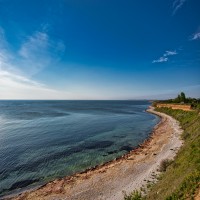
Photo credits: Banners: European Bee-eater by Gerard Gorman; Collared Pranticole by Peg Abbott; Greater Flamingo by Pieter Verheij Photography; Great Spotted Woodpecker by Pieter Verheij Photography; Mytilene, Greece, courtesy lesvosgreece.gr; Ipsilou Monastery, courtesy lesvosgreece.gr; Hoopoe by Gerard Gorman, Greater Flamingo by Pieter Verheij Photography; Mytilene, Greece, courtesy lesvosgreece.gr; European Bee-eater by Gerard Gorman; European Kingfisher by Tom Dove; Purple Heron by Peg Abbott; White Stork by Pieter Verheij Photography; Mytilene, Greece, courtesy lesvosgreece.gr; Ipsilou Monastery, courtesy lesvosgreece.gr; Sigri Castle and Town, courtesy lesvosgreece.gr; Red-footed Falcon, Steve Bird; Collared Pranticole, Peg Abbott; Pallid Harrier, Steve Bird; Spur-winged Plover, Steve Bird; Black-eared Wheatear, Pieter Verheij Photography; Pied Avocets, Steve Bird; Greater Flamingo, Steve Bird; Black-headed Bunting, Peg Abbott; Cinereous Bunting, Peg Abbott; Collared Prantincole, Peg Abbott; Corn Bunting, Peg Abbott; Kalloni Salt Pans, Peg Abbott; Subalpine Warbler, Peg Abbott; Thread Lacewing, Peg Abbott.
Like what we do?
Sign up for our weekly enews to stay up to date, get to know our favorite destinations each week. we promise no spam..
Greece Bird Tours
- Destinations
- __Erythres Plains
- __Mt Hymettus
- __Mt Parnitha
- __Oropos Lagoon
- __Schinias National Park
- __Spata fields
- __Vravrona wetland
- _Central Greece
- __Lake Dystos
- __Messolonghi Lagoons
- __Mt Parnassos
- _Lake Kerkini
- _Lesvos Island
- _Thessaloniki city
- Custom Tours
- _Birding Tours
- _Athens Layover Birding Tours
- _Birding & Honey Tasting
- _Birding, History & Culture
- _Birding & Wine tasting
- _Herping tours
- _Mindful Birding
- Birding in Athens
- _Athens Survival Tips
- _Athens striking birds
- _Athens target birds
- _Athens Hospitality

New species for Greece: Eastern Yellow Wagtail
1st record for Greece: Eastern Yellow Wagtail ( Motacilla tschutschensis ) at Schinias National Park This autumn, we ha…

Lesvos Birding Tours 2024 schedule
Lesvos 2024 private birding tours Birding in Lesvos during spring migration is a lifetime experience. We offer private…
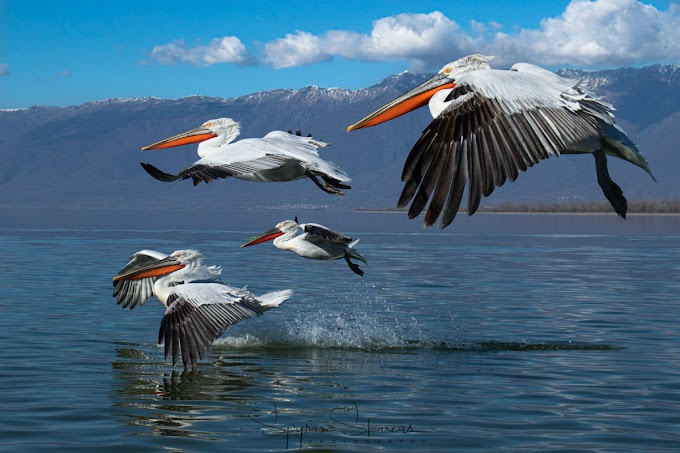
Kerkini Birding Tours 2024
Lake Kerkini 2024 schedule - Private Birding Tours Birding and wildife watching in Lake Kerkini is memorable experience…
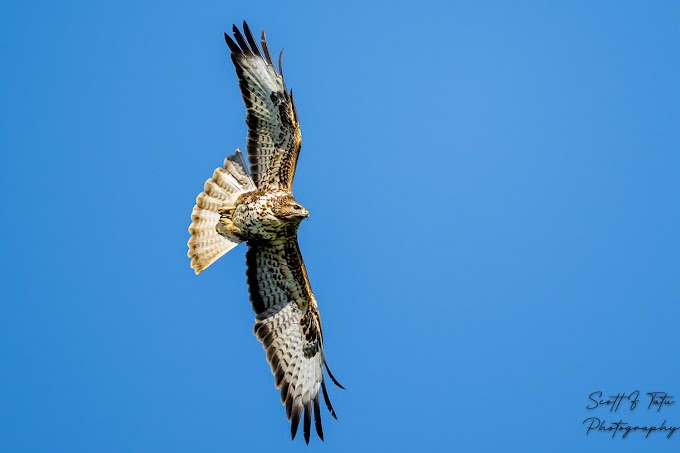
Bird photography tour: Raptors Project, Nov 18th 2023
Bird photography tour around Athens: Raptors Project, Nov 18th 2023 Photographing birds of prey is always challenging. …

Rarity Alert: Snow Bunting at Axios Delta, Thessaloniki
Birding break in Northern Greece, Nov 14th 2023 Last week we had the chance to escape from our local patches and birdin…
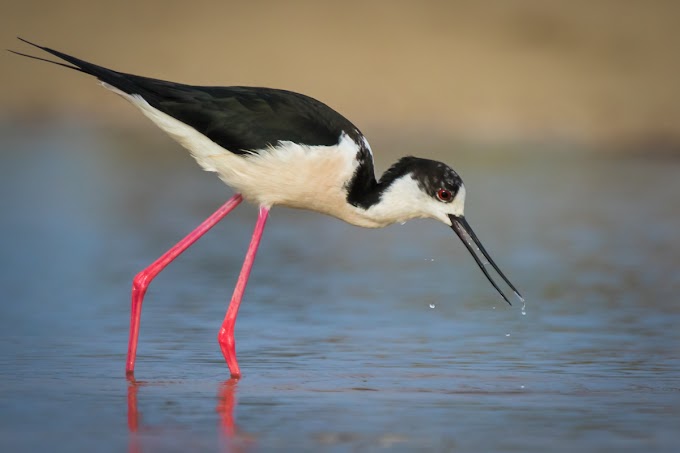
Εκδρομές Παρατήρησης Πουλιών για όλους
Παρατήρηση Πουλιών: Μία δραστηριότητα που κάνει την ψυχή να πετά! Καλαμοκανάς ( Himantopus himantopus ) ψαρεύει στο Εθ…

Rafina Port Layover: Birding tours in Attica Riviera
Rafina Port Layover: Take a birding break before your Andros, Tinos or Mykonos holiday! Are you going to be waiting at…
GREECE BIRD TOURS
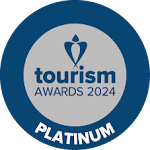
[email protected]
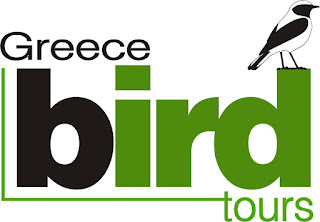
- Private Birding tours
- Trip Reports
Social Plugin
Featured post.
Birding Athens Tour: Raptors and summer specials
Popular posts.
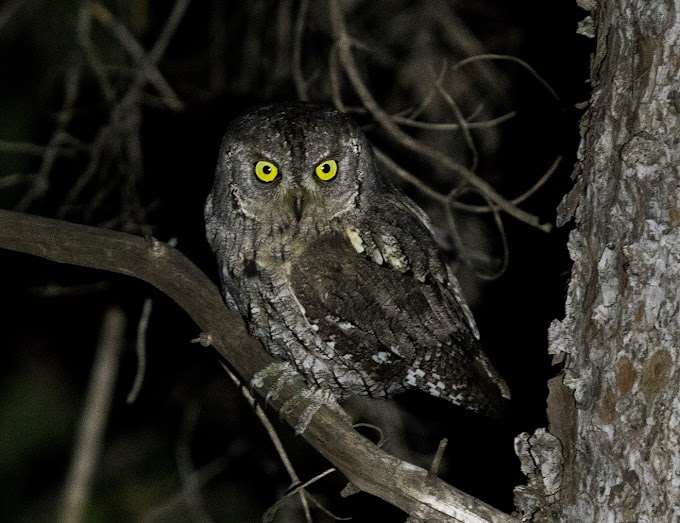
Birding in Athens: Top 10 targets species and where to find them


Athens 10 most colourful birds

Birding Athens National Garden: a city oasis

Athens bird trip report, April 21st

Lesvos Birding Tour 2023: Day 1
- Schinias National Park 128
- Mt Hymettus 73
- Vravrona wetland 62
- Spata fields 48
- Artemis Lagoon 43
- Oropos lagoon 28
- Mt Parnitha 21
- Lesvos Island 19
- Erythres plain 10
- Kopaida plain 10
- Cape Sounio 9
- Mt Parnassos 6
- Lake Dystos 3
Report Abuse
- Privacy Policy
Footer Copyright
Contact form.
Greece: Lesvos in Spring Extension
Go to: Greece Birding Tours | Birding Tours in Europe | All our birding tours
Dates and Costs
05 – 09 May 2025
Price: €2,314 / $2,610 / £2,079 per person sharing – based on 4 – 6 participants Single Supplement: €221 / $249 / £198
* Please note that currency conversion is calculated in real-time, therefore is subject to slight change. Please refer back to base price when making final payments.
05 – 09 May 2026
Price: €2,569 / $2,898 / £2,308 per person sharing – based on 4 – 6 participants Single Supplement: €245 / $276 / £221
Recommended Field Guide
(Please also read our blogs about recommended field guides for the seven continents here )
Tour Details
Duration : 5 days Group Size : 4 – 8 Start : Mytilene International Airport, Mytilene, Lesvos End : Mytilene International Airport, Mytilene, Lesvos
Price includes:
All accommodation (day 1 until day 4 as described above, or similar) Meals (from dinner on day 1 until breakfast on day 5) Drinking water – please bring a refillable water bottle Expert tour leader Local bird and wildlife guide fees Birdwatching site entrance fees and travel permits All ground transport and tolls/taxes while on tour, including airport pick-up and drop-off
Price excludes:
Flights to and from Mytilene International Airport, Mytilene, Lesvos Expenditures due to flight cancellations/delays or other causes beyond our control (force majeure) Visa fees if visa required Departure tax Items of a personal nature, e.g. gifts, laundry, internet access, phone calls etc. Any pre- or post-tour accommodation, meals, or birding/sightseeing excursions Soft/alcoholic drinks Personal travel insurance Gratuities ( please see our tipping guidelines blog )
Birding Tour Greece : Lesvos in Spring Extension May 2025/2026
For the last 40 years, birders across the world have flocked to Lesvos for the awesome birding that this small Mediterranean island has to offer. Lesvos (part of Greece ) is separated from mainland Turkey by just eight miles (14 kilometers) of the Mytilini Strait. Its position, at the borders of two continents, results in the island having a great diversity of bird species, of both European and Asian origin, which simply takes off during the migration season (especially in the spring).
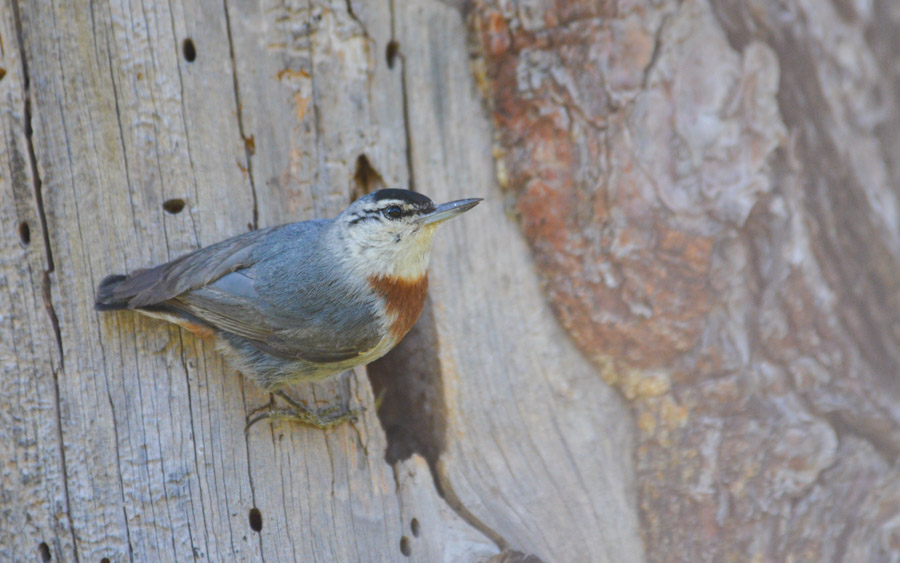
On this, the third-largest Greek island, extensive areas of very different habitats are found (such as olive groves, pine forest, garrigue , and maquis ), while another very important aspect that lures the birds to the island is the number of wetlands that are found here. Lesvos has a surprisingly high bird list for a relatively small island of 348 species (following International Ornithological Congress (IOC) v13.1 taxonomy, as of July 2023), and as such this will prove an excellent short extension to our longer Birding Tour Greece: Spring Birding Adventure on the Greek mainland.
Spring on the island is an incredible experience as thousands of migrant birds pour into and over the island as they return from their sub-Saharan wintering grounds in Africa , some stopping to breed in Lesvos with others continuing further north. Multiple species from a wide range of bird families including many spectacular summer-plumaged warblers, flycatchers, wheatears, shorebirds (waders), crakes, terns, herons, egrets, birds of prey, pipits, wagtails, finches, and buntings move through the island and boost an already impressive resident population of bird species. Some of the top migrant highlights include Eleonora’s Falcon , Lesser Kestrel , Levant Sparrowhawk , Eurasian Scops Owl , Little Crake , Baillon’s Crake , Little Bittern , White-winged Tern , Whiskered Tern , Masked Shrike , European Roller , European Bee-eater , Common Nightingale , Olive-tree Warbler , Rüppell’s Warbler , River Warbler , Rufous-tailed Scrub Robin , Eastern Black-eared Wheatear , Isabelline Wheatear , Collared Flycatcher , Red-throated Pipit , Citrine Wagtail , Black-headed Bunting , Cinereous Bunting , and Cretzschmar’s Bunting .
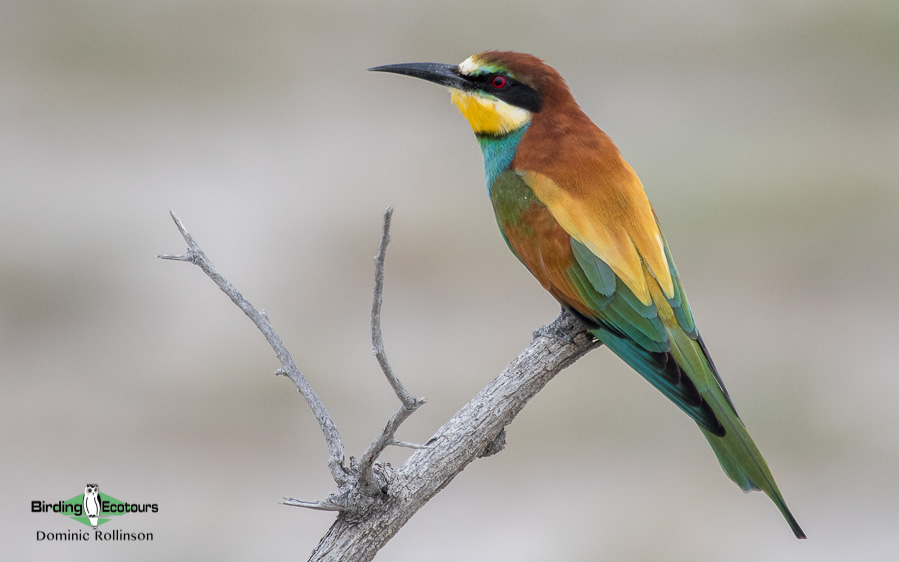
Being an island, Lesvos also has its own selection of interesting localized species and subspecies, including a couple of highly prized birds in Krüper’s Nuthatch and Western Rock Nuthatch . Other interesting resident species include Chukar Partridge , Greater Flamingo , Spur-winged Lapwing , Long-legged Buzzard , Middle Spotted Woodpecker , Short-toed Treecreeper , Long-tailed Tit , Sombre Tit , and Rock Sparrow .
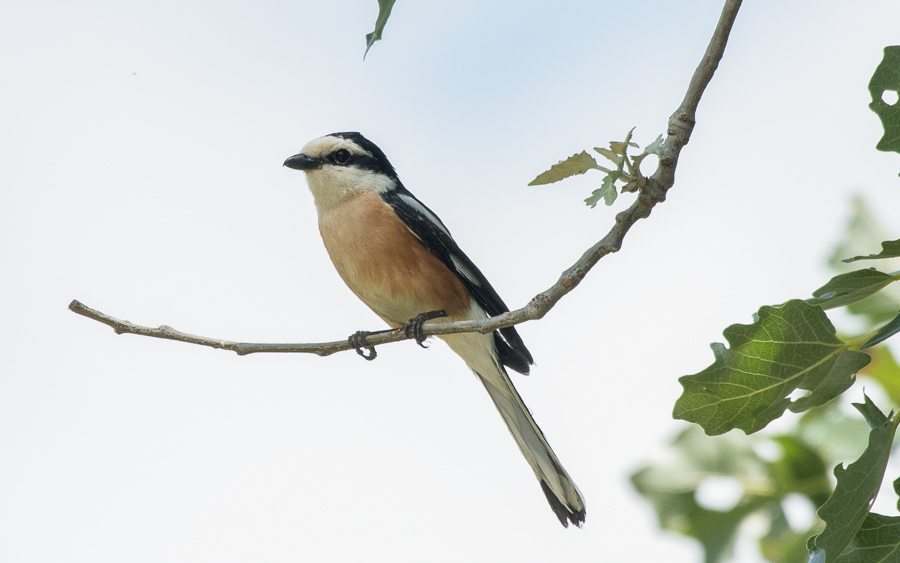
We will search for the beautiful Masked Shrike on Lesvos (photo Lavrentis Sidiropoulos).
You could also combine our two Greece tours with our Birding Tour Bulgaria and Romania: Birding the Balkans in Spring tour which offers a whole host of new species and experiences in two nearby beautiful countries bordering the Black Sea. This provides an ideal combination if you would like to extend your time in this beautiful and unique part of Europe, with some of the other great birds possible including Eastern Imperial Eagle , Saker Falcon , Red-footed Falcon , Wallcreeper (monotypic family), Pied Wheatear , and Semicollared Flycatcher .
Itinerary (5 days/4 nights)
Day 1. arrival in lesvos.
We will be met at Lesvos airport and transferred to our nearby hotel in picturesque Skala Kalloni where we will base ourselves for the duration of this tour. Along the way we might get time to look out at sea where we could see Yelkouan Shearwater , Scopoli’s Shearwater , Mediterranean Gull , Yellow-legged Gull , Great Cormorant , and European Shag .
Once we have checked into our accommodation, we will get straight into exploring the local area and familiarizing ourselves with its avifauna, in particular, common species such as Common Nightingale , Eastern Olivaceous Warbler , White Stork , European Bee-eater , Eurasian Hoopoe , Red-backed Shrike , Woodchat Shrike , Eurasian Golden Oriole , Whinchat , and Red-rumped Swallow . These species, plus many more, move through Lesvos throughout the spring passage season and the number and make up of species can vary daily, making for a really exciting time for us. The Lower Tsiknias Valley, not too far from our accommodation, is a great migrant trap and we might find a range of waterbirds, including marsh terns ( Black Tern , White-winged Tern , and Whiskered Tern ), a range of shorebirds, herons, ibises, and crakes. The scrub here can also be full of warblers and Spanish Sparrows with the adjacent fields an excellent spot for shrikes, chats, and buntings.
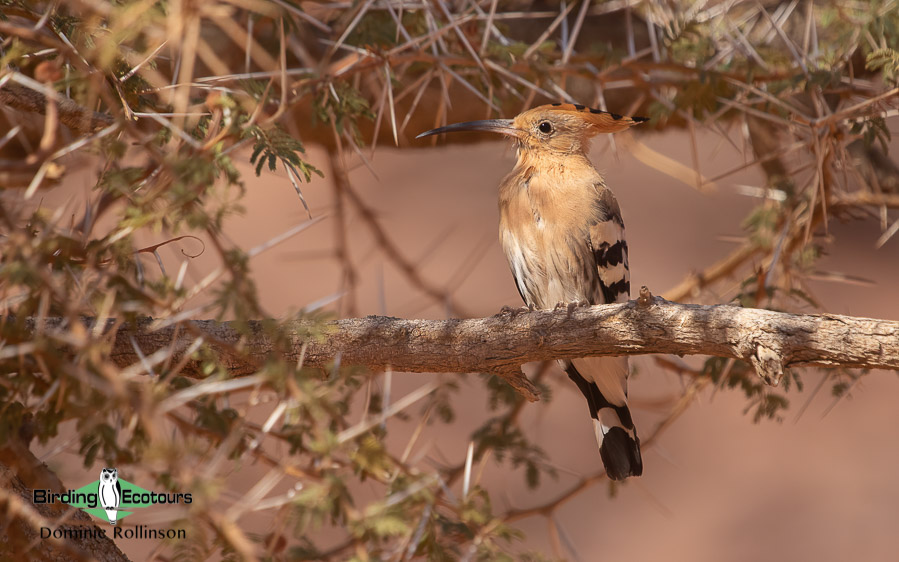
The area around our accommodation could also yield Eurasian Scops Owl , Western Barn Owl , Long-eared Owl , and River Warbler . Once back at our hotel we will discuss the various birding areas on the island and the plan for the next three days when we will target the many highlight birds available by visiting the key sites and habitats for these birds.
The thrill of birding somewhere like Lesvos during the spring migration is that a wide range of species can occur anywhere at any time. While exploring the island over the next few days we will keep an eye open (and skywards) for numerous raptor species that can be possible here, such as Long-legged Buzzard , Short-toed Snake Eagle , Western Marsh Harrier , Montagu’s Harrier , Peregrine Falcon , Eleonora’s Falcon , Red-footed Falcon , Lesser Kestrel , and Levant Sparrowhawk . The same is true for many other groups of birds and so we will be prepared to stop and look, as and when required, it is sure to be an enthralling few days birding.
Overnight: Malemi Organic Hotel , Skala Kalloni
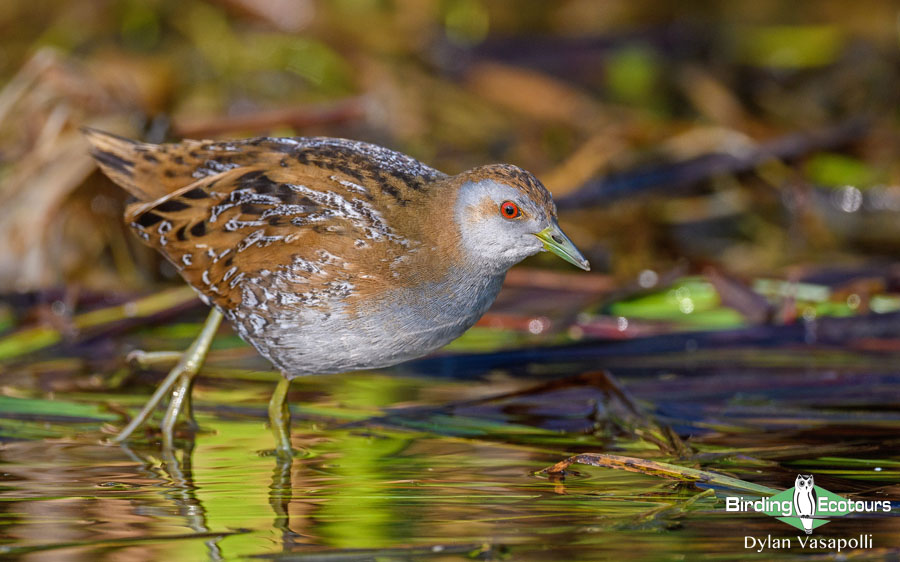
Day 2. Achladeri Pine Forest and Kalloni Gulf wetlands
Lesvos is one of the best areas in Europe for finding the localized Krüper’s Nuthatch , and we have a wonderful chance to get close-up views of this highly sought-after species when we visit Achladeri Pine Forest. Other forest species that we might see here include Middle Spotted Woodpecker , Short-toed Treecreeper and the local form of Long-tailed Tit . Other breeding species here include Masked Shrike , Woodlark , and Eastern Black-eared Wheatear .
In the island’s olive groves, such as those in the Achladeri area, we should get good sightings of Olive-tree Warbler , Eastern Subalpine Warbler , and Middle Spotted Woodpecker and as we move between Achladeri Pine Forest and Kalloni Gulf wetlands, our other main site for the day. We might call into a rocky outcrop area with the chance of both Western Rock Nuthatch and Blue Rock Thrush .
The Kalloni Gulf is surrounded by different types of coastal wetlands, including a large area of saltpans, making it an ideal place to search for migrating and breeding waterbirds but plenty of other birds can be found here too. We will be able to see the elegant Black-winged Stilt nesting, plus Little Bittern , Little Egret , Great (White) Egret , Squacco Heron , Grey Heron , Purple Heron , Black Stork , and Ruddy Shelduck on their breeding grounds, together with an excellent variety of shorebirds (waders) such as Collared Pratincole , Eurasian Stone-curlew , Little Stint , Curlew Sandpiper , Kentish Plover , and Little Ringed Plover . We may even find the stunning Spur-winged Lapwing .
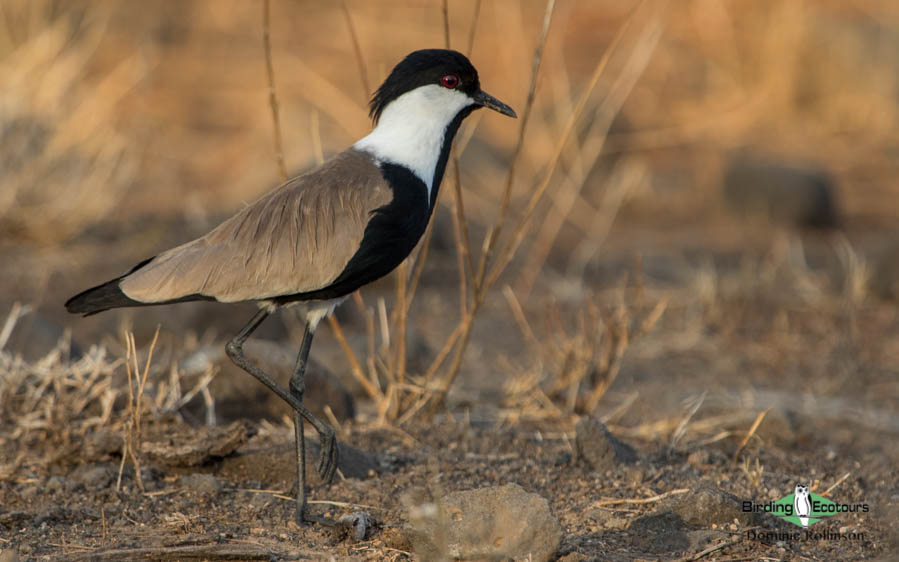
Day 3. Kalloni Gulf wetlands, the central island, and Mount Lepetimnos
We will start the day searching nearby wetlands for species such as those mentioned above plus others such as Pied Avocet , Black-tailed Godwit , Wood Sandpiper , Marsh Sandpiper , Ruff , Common Tern , Little Tern , Black Tern , Whiskered Tern , White-winged Tern , Black-crowned Night Heron , Little Crake , and Spotted Crake which are all possible. We should also see plenty of gorgeous Greater Flamingos here too, along with Eurasian Spoonbill , Glossy Ibis , Common Shelduck , and Garganey , a huge variety of species is possible.
It is also worth scanning the open areas here for Pallid Harrier , Montagu’s Harrier , and Red-footed Falcon , arguably three of the best-looking raptors in Europe. We might also come across flocks of pipits and wagtails, these could include several subspecies of the Western Yellow Wagtail complex (including the stunning black-headed feldegg subspecies), Citrine Wagtail (a shockingly colorful bird at this time of year), Red-throated Pipit , and Tawny Pipit .
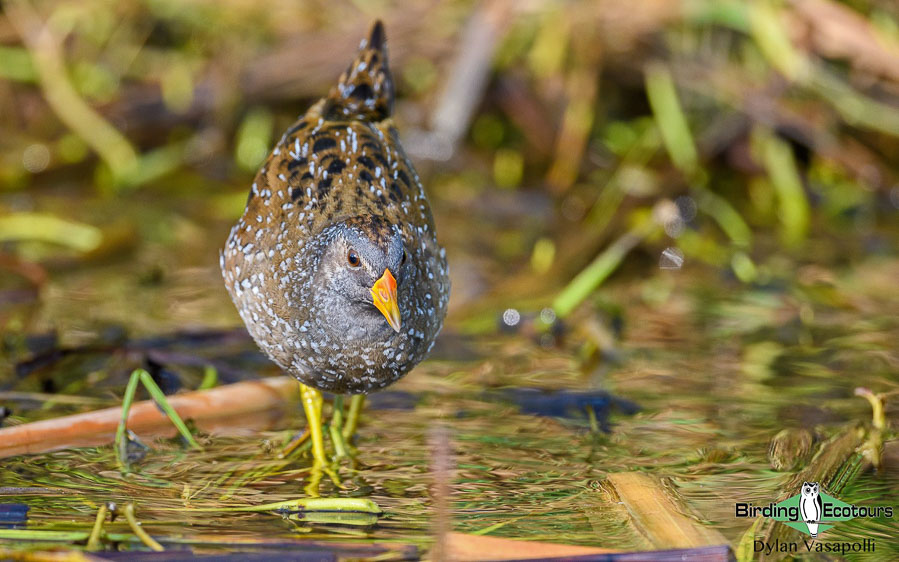
From here we will make our way to the north of the island around Mount Lepetimnos , where we have the opportunity to again observe Masked Shrike along with lots of other really exciting species, such as Black Stork , Woodchat Shrike , Sombre Tit , Western Rock Nuthatch , Rüppell’s Warbler , Eastern Subalpine Warbler , Olive-tree Warbler , Eastern Bonelli’s Warbler , Black-headed Bunting , European Pied Flycatcher , Collared Flycatcher , Middle Spotted Woodpecker , Little Owl , and Eurasian Scops Owl .
Driving the roads here we might locate European Bee-eater , European Roller , Lesser Grey Shrike , Chukar Partridge , Red-rumped Swallow , Eurasian Crag Martin , Alpine Swift , or European Turtle Dove , so it’s always worth keeping our eyes peeled!
Mount Lepetimnos is another area that is usually particularly good for raptors and we will keep a look out for those as usual, maybe finding Eurasian Goshawk , Peregrine Falcon , Short-toed Snake Eagle , or Eleonora’s Falcon while here.
Day 4. Western Lesvos
Lesvos is one of the few islands where you can find Cinereous Bunting , and this species will be our main target for the day as we head out to the west of the island on what promises to be an exciting day. Today is often considered the most enjoyable day on Lesvos, due to the amazing scenery and birds possible.
While searching for Cinereous Bunting we will be able to see a variety of species occupying the extensive garrigue areas (garrigue is a low, soft-leaved scrubland ecoregion and plant community found in the Mediterranean) of the western island, with scattered and thin oak forest. We will also look for the gorgeous Cretzschmar’s Bunting , Cirl Bunting , Rock Sparrow , Isabelline Wheatear , Eastern Black-eared Wheatears , Northern Wheatear , Western Rock Nuthatch , Blue Rock Thrush , Eastern Orphean Warbler , Rufous-tailed Scrub Robin , Common Linnet , European Serin , European Goldfinch , and Little Owl .
Other birds we will be looking for in this general area could include Pallid Swift , Eleonora’s Falcon , Chukar Partridge , Common Quail , Lesser Kestrel and proper Rock Doves , not just the standard ‘Feral Pigeons’ that are so widespread around the world now, but their wild ancestors – the real deal! There are bound to be many other interesting birds found throughout the day too.
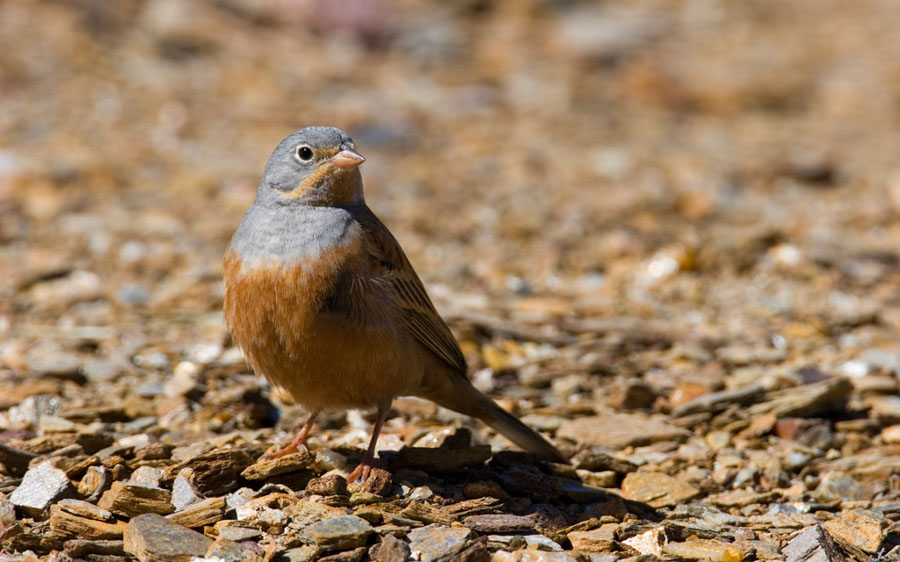
Day 5. Departure
We should have time for some early morning birding around our accommodation before we wrap up our activities and make our way to Lesvos Airport for the flight back home in the afternoon.
If you are not ready to head home yet, you could join us for our Birding Tour Bulgaria and Romania: Birding the Balkans in Spring tour, which offers an unforgettable experience in the Black Sea region of Europe, where yet more exciting birds await, such as Wallcreeper , Eastern Imperial Eagle , Cinereous Vulture , Spotted Nutcracker , Grey-headed Woodpecker , Syrian Woodpecker , Black Woodpecker , Pied Wheatear , and Semicollared Flycatcher , to name just a few.
Overnight: Not included
Please note that the itinerary cannot be guaranteed as it is only a rough guide and can be changed (usually slightly) due to factors such as availability of accommodation, updated information on the state of accommodation, roads, or birding sites, the discretion of the guides and other factors. In addition, we sometimes must use a different international guide from the one advertised due to tour scheduling.
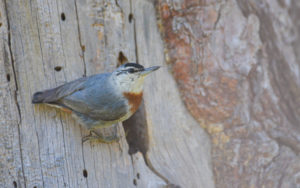
Krüper's Nuthatch
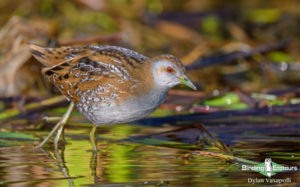
Baillon's Crake
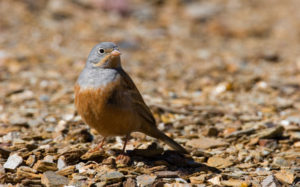
Cretzschmar's Bunting
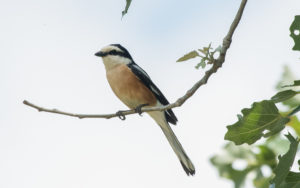
Masked Shrike
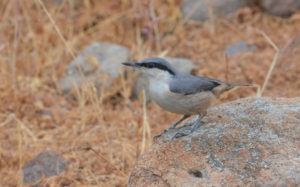
Western Rock Nuthatch
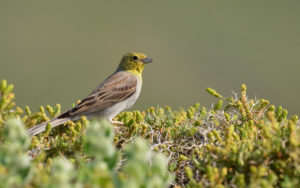
Cinereous Bunting
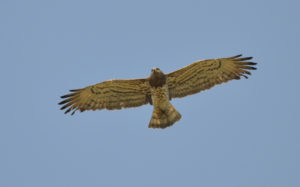
Short-toed Snake Eagle
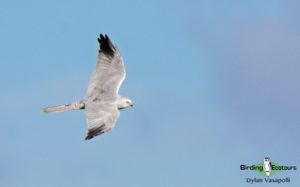
Pallid Harrier
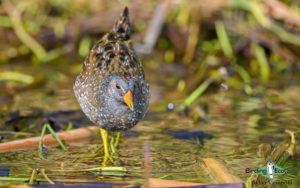
Spotted Crake
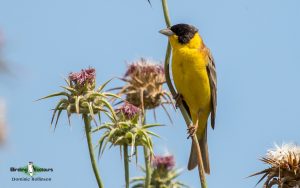
Black-headed Bunting
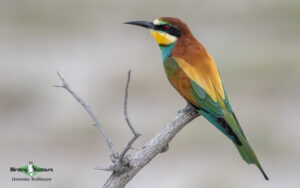
European Bee-eater
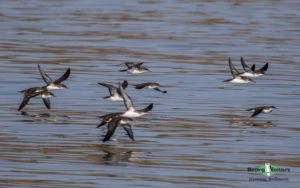
Yelkouan Shearwater
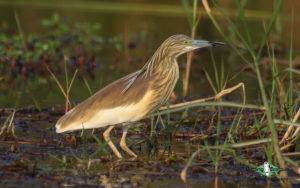
Squacco Heron
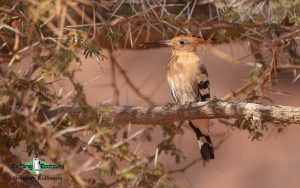
Eurasian Hoopoe
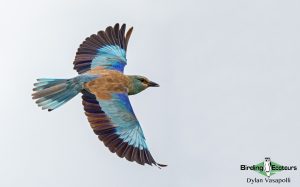
European Roller
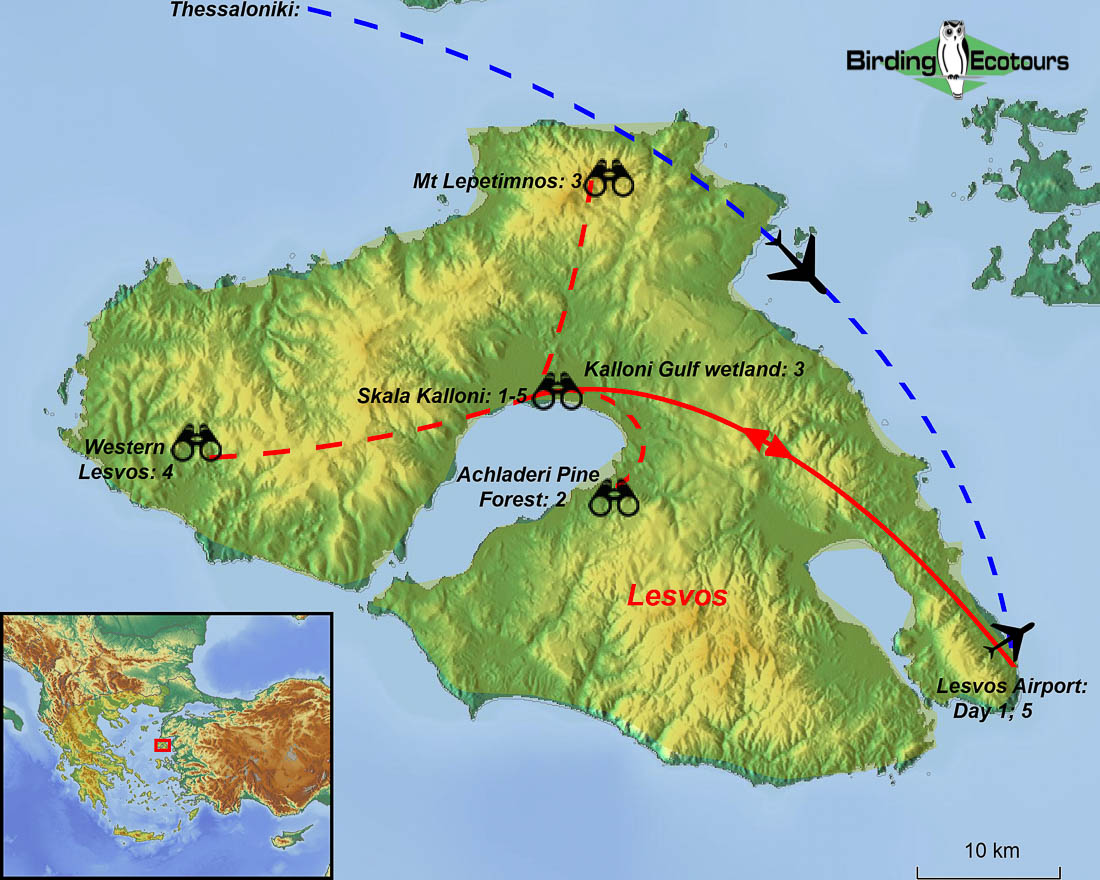
Greece Birding Adventure with Extension to Lesvos Trip Report
2 – 15 may 2016.
DOWNLOAD TRIP REPORT
While coming to Greece on a Birding Ecotours adventure is most definitely about the birds, one simply must visit some of the archaeological sites around Athens as well as prepare oneself for the incredible ‘wining and dining’ that the country has to offer! The Acropolis of Athens, the majesty of Lake Kerkini, the beauty of the Dadia Forest, and the wonderful island of Lesvos make the Greece birding adventure, with the Lesvos extension , one to remember.
Pre-day, May 2. Arriving in Greece
After touching down safely in Athens we were transferred to our hotel, which was five minutes walk from the Acropolis Museum and Acropolis hill. That evening before dinner we had a guided tour of the Acropolis of Athens. The roots of the Greek word “Acropolis” would be translated to “city edge”, (acro – edge, polis – city). Seeing the Acropolis and its important historic buildings, such as the Parthenon, up close is just fascinating and gives a really good foundational knowledge of the rich history of the city of Athens and Greece as a whole. A birding highlight for the afternoon was watching both Common and Alpine Swifts cruise all around us while walking on the Acropolis.
Day 1, May 3. Cultural Highlights and European birding introduction in Athens
Athens, which can be considered the historical capital of Europe, has an incredible charm. Walking the streets of this modern metropolis allowed us to get the true feel of the city. After having visited the Acropolis the night before, we visited some of the surrounding area and many other important sites, such as the Areopagus hill (from where the below photograph of the Acropolis was taken), Philopappou Hill, the Roman Agora, the Temple of Olympian Zeus, as well as the Athens National Garden. Some of the species that caught our attention throughout the day were Eastern Olivaceous Warbler , Common Blackbird , European Robin , and Eurasian Magpie . An authentic Greek-style dinner in the Plaka neighborhood was complemented by the beauty of the Acropolis under floodlights.
Day 2, May 4. Athens birding and flight north to Thessaloniki
A quick breakfast at the Acropolis Boutique Hotel kicked off the day before we were picked up and taken to the Hymettos Mountain, which lies to the east of Athens, for a morning’s birding before making our way to the airport for our short local flight to Thessaloniki. The birding was good and gave us more of an indication of what was to come. Some of the species we managed to find were Rüppell’s Warbler , Subalpine Warbler , Alpine Swift , Eurasian Magpie , Eurasian Jay , Short-toed Treecreeper , Eurasian Sparrowhawk , and Black-eared Wheatear . Once we had landed in Thessaloniki we were picked up by Lavrentis, who was to be our guide for the Northern Greece leg of the trip. After picking up some Western Jackdaw and a single Rook , we made one stop on the way north to Kerkini, where we had some really nice sightings of Lesser Kestrel , both males and females. We also managed to improve our trip list with the addition of some of the more common species in the north; these included Red-rumped Swallow , Common House Martin , White Stork , and Common Buzzard . The town of Kerkini is peaceful and is a perfect spot from which to explore the region. Dinner was just a thirty second walk from our guest house, and yes, it was really good!
Day 3, May 5. Lake Kerkini and the Dalmatian Pelican
A fairly early start in Kerkini allowed us to catch some of the morning light, and with that came a lovely pair of Red-footed Falcons perched up on some of the telephone lines. It was also a good day for Cetti’s Warbler – a very confiding individual singing his lungs out gave us a bit of a show and even allowed for some ‘in the open’ photographs, a real treat from a master skulker. The morning’s birding was mainly around the eastern bank of Lake Kerkini; here we had our first taste of this beautiful lake and the birds that call it home for the summer. Species that entertained us that morning included some real European specials. Dalmatian Pelican and Pygmy Cormorant both showed well that morning along with other waterfowl, such as Great Cormorant , Great White Pelican , Great-crested and Little Grebes , Little Bittern , Eurasian Spoonbill , Squacco and Purple Herons , and Black-crowned Night Heron . Eurasian Golden Oriole , Common Cuckoo , and Common Nightingale were all in full song throughout both days around Kerkini; sightings of these species weren’t too common, though. On the raptor front European Honey Buzzard and White-tailed Eagle entertained us with fairly brief fly-bys, while Western Marsh-Harrier and Black Kite were around in good numbers. European Green Woodpecker obliged by landing quite low alongside the road just as we started to move off from the lakeside. The afternoon warranted a visit to the well known Serres quarry for the likes of Western Rock Nuthatch and some raptors. We did well in the general area, managing to find Cirl Bunting , Subalpine Warbler , Black-eared Wheatear , a very brief view of Black Redstart , and Common Buzzard , as well as Short-toed Snake Eagle . One of the highlights of the trip in fact was watching some territorial Levant Sparrowhawks in some aerial displays as well as some aerial duels in the area of the quarry.
Day 4, May 6. Lake Kerkini boat cruise and woodpeckers
After traveling to some parts of the lake yesterday, today we had an organized boat ride to get a little closer to some of the specials that the lake offers. Once again a beautiful morning greeted us, and the birds certainly did not disappoint. All three species of Chlidonias terns, namely Whiskered , White-winged , and Black Terns , were present throughout the boat trip – some showing off some acrobatics as they skimmed the water surface. Once again both Pelican ( Great White and Dalmatian ) and Cormorant ( Great and Pygmy ) species showed exceptionally well, and add to that the advantage of being on a boat and you have some amazing photographic opportunities! A few of the other species that we saw from the boat included Pied Avocet , Common Shelduck , Common Pochard , and Mute Swan . The boat trip was truly a highlight and any boat trip adds fantastic dynamic to any birding tour. Both Black and White Storks were seen during the afternoon birding session, which we had near the lake and in the surrounding areas. One of the main targets for the afternoon was Grey-headed Woodpecker, which breeds in large stands of trees along the lake. We picked up on some drumming nearby, and after finding Great Spotted Woodpecker first, we also heard the call of Grey-headed Woodpecker . The bird took a little while to locate, but once we were onto it extended views were had. Some other species that afternoon included Black-headed and Corn Buntings , Crested Lark , Syrian and Lesser Spotted Woodpeckers , Little Owl , Northern Raven , the brilliant Blue Rock Thrush , and a smart-looking Long-legged Buzzard .
Day 5, May 7. Alpine birding on Mount Pangaion and at Kavala
We departed from Kerkini after breakfast and made our way to Mount Pangaion, which reaches an elevation of 1956m above sea level. Mount Pangaion would offer us a few “alpine species” that enjoy the higher, colder, mountainous terrain. A brief European Roller sighting kicked off the trip toward the mountain, and before we knew it the temperature was dropping and the mist was rolling in. One of the specials of the area, Rock Partridge, occupies the rocky hillsides and was one of the biggest targets for us for the morning. Common (Rufous-tailed) Rock Thrush showed rather nicely, while the calls of Ortolan Bunting and Black Redstart rang up from below us. We spotted a single Rock Partridge ahead of us and were more than satisfied with good scope views. A pair of Alpine Chough cruised over, but disappeared all too quickly back into the thickening mist. We ascended further and had some lunch near the top of the mountain – alongside a couple of new species for our trip list; these included Common Linnet , Horned Lark , Woodlark , Eurasian Skylark , Tawny Pipit , and Northern Wheatear . The drive back down was quiet bird-wise, but we did add sightings of Common Chiffchaff and Song Thrush . A successful day up on Mount Pangaion indeed, and all that was left was a scenic drive to the city of Kavala. Dinner right on the beach of this picturesque city, which is built on the slopes of Mount Symvolo, was the perfect way to end the day.
Day 6, May 8. Nestos Delta and Evros Delta
Leaving Kavala behind we headed to the delta habitats of Nestos and Evros. Our first stop was at the Nea Kessani salt pans. Driving in we picked up Zitting Cisticola , Whinchat , and Bimaculated Lark throwing around some mimicry. In the summer the pans are home to good numbers of Greater Flamingos , shorebirds, and other waterfowl; some of the species we found here were Black-winged Stilt , Eurasian Oystercatcher , Little Ringed and Kentish Plovers , Curlew Sandpiper , Little Stint , Dunlin , Ruff , and Common Redshank . A group of four Gull-billed Terns was feeding over a nearby field on our way out. The afternoon was spent birding some of the quieter back roads on the way to our accommodation in Dadia. At some local wetlands and lakeside patches we picked up the likes of Eurasian Penduline Tit , Western Yellow Wagtail , Collared Pratincole , and Common Snipe , as the booming calls of Eurasian Bitterns resounded through the reedbeds. We moved on to some woodland in search of woodpeckers and potentially some shrikes too and were rewarded with a fantastic sighting of a roosting Tawny Owl sitting high up in a mature tree. Some of the other species seen on the way to Dadia included Eurasian Nuthatch , Red-backed and Woodchat Shrikes , and Corn Bunting , as well as Spotted Flycatcher . Before dinner we were sure to add European Serin and European Goldfinch to our day list, both species hanging around the beautiful pine trees surrounding our accommodation for the night.
Day 7, May 9. Evros Delta
Today saw us head out to parts of the Evros Delta, where really good numbers of waterfowl, waders, and wetland species were lingering. The local ‘parks officials’ showed us a short introduction video on the Evros Delta and surrounds, which helps one to realize the vastness of the area. The birding started out alongside some small pans, which held the likes of the striking Little Gull , Northern Lapwing , Northern Pintail , Garganey , and a flock of Ferruginous Ducks . The delta really was teeming with bird species, and European Bee-eaters provided us with some entertainment, swooping around hawking insects. The coastline was also productive, and here we added Grey Plover , Eurasian Oystercatcher , Mediterranean Gull , and the large Yellow-legged Gull . We headed deeper still into the delta through some pretty wet terrain and added some waders, including a few new ones for our trip list: Wood Sandpiper , Eurasian Curlew , and Spotted Redshank . Another highlight for the morning’s session was a couple of Ruddy Shelducks alongside large flocks of herons, egrets, and Common Shelducks . Continuing in the delta region in the afternoon we targeted Masked Shrike , which enjoys perching on the sides of thick bushes and shrubs alongside the roads. We were not disappointed and had both males and females pose fairly well for the cameras. We also had the likes of European Turtle Dove , Common Reed Bunting , Glossy Ibis , Great Reed Warbler , Squacco Heron , and Purple Heron .
Day 8, May 10. Dadia Forest
The Dadia Forest is well known for its vulture feeding station with observatory, and this was our first stop of the day. From the observatory one can get exceptional looks at Cinereous Vulture and Griffon Vulture , as well as the rare Egyptian Vulture , and, sure enough, all three species were on show for us today. Really good scope views of about six Cinereous, two Egyptian and over ten Griffons were had. The subtle call of Eastern Bonelli’s Warbler started to ring through parts of the forest, and soon enough we tracked one down and had exceptional looks at this tiny Phylloscopus warbler. After we had spent as much time as we needed at the observatory and in the forest area we drove to another mountainous spot close by; here we had lunch and found species such as the sought-after Sombre Tit , Rock and Ortolan Buntings , Lesser Whitethroat , Hawfinch , Middle Spotted Woodpecker , and Mistle Thrush . The last spot that we visited that day catered for warbler species in some road verge thickets, most of which we had already seen on the trip, but they are always worth a second look: Common Whitethroat and Sardinian and Eastern Orphean Warblers , the latter giving us the runaround.
Day 9, May 11. Drive to Thessaloniki and departure for Lesvos
We set off quite early from the Dadia Inn so that we could catch our local flight from Thessaloniki to the island of Lesvos.
5-DAY EXTENSION TO THE ISLAND OF LESVOS
Day 1 (day 9), may 11. mytilene to skala kalloni.
Arriving in Mytilene, the capital of Lesvos, we already knew by the scenery, the beautiful calm sea, and the lovely sunshine that we were in for a real treat during our time on the island. Migration was in full swing, and many species were still on the island, some of which had already started breeding. A forty-five minute drive from the Mytilene airport to our accommodation in Skala Kalloni allowed us to get a good feel for the habitats on the island. Lesvos is well known for the production of olive oil, with approximately eleven million olive trees on the island, but it is also renowned among European birders as one of the migration hotspots during the spring. After arriving at our accommodation we enjoyed a lovely Greek-style lunch and later met up with our local guide, Eleni, to discuss the birding plans for the Lesvos leg of the trip.
Day 2 (Day 10), May 12. Achladeri Pine Forest and Kalloni Gulf wetlands
We kicked off the birding along some of the wetland patches around the Kalloni salt pans, targeting Rufous-tailed Scrub Robin among others. The robin was soon heard calling nearby, and on our second attempt we managed to have some nice looks. A pair of Little Terns bred in a canal next to where we found the robin, and so we had some nice views of them feeding over the canal. Krüper’s Nuthatch is one of the more obvious targets for the island, and so we decided that we would dedicate the rest of the morning to look for the nuthatch. After spending a good twenty minutes wandering through a nearby pine forest, the preferred habitat of the nuthatch, we were alerted to the presence of one individual by its simple contact call. Krüper’s Nuthatch normally moves around in little family groups, and so this single individual didn’t hang around too long; we were going to have to give it another try. We did manage to see Long-tailed Tit , which we dubbed “flying teaspoon”, as well as European Serin and Great and Eurasian Blue Tits . Eleni managed to locate a couple of roosting owls in some nearby groves, first a Long-eared Owl and then a couple of Eurasian Scops Owls . We also found out firsthand why Olive-tree Warblers are named as such after finding a few inside olive groves in different spots on the island. Our afternoon birding session included another shot at Krüper’s Nuthatch , and after some searching we managed to find a parent bird clambering around collecting food among the pine cones for one of its young following nearby, a marvelous sight!
Day 3 (Day 11), May 13. Western Lesvos
Today we headed out toward the western parts of Lesvos, known as the drier, rockier area that brings a few different species to the party. Our first stop, quite high up one of the steep hillsides, allowed us to add Chukar Partridge , Northern and Isabelline Wheatear , Cretzschmar’s Bunting , Western Rock Nuthatch , Black-eared Wheatear , and the sought-after Cinereous Bunting to our list. Keeping our eyes to the skies eventually paid off as we spotted a couple of Eleonora’s Falcons as well as some Lesser Kestrels and Northern Raven . In total we managed to see one dark morph and two light morph of Eleonora’s Falcon . A very confiding Little Owl gave us some nice photo opportunities, while a couple of Common Linnets were also rather approachable while feeding on some plant seeds. A flock of wild-type Rock Doves was preferred to feral populations in cities. Other attractions during the day included Icterine Warbler , Pallid Swift , European Shag , Eurasian Crag Martin , Blue Rock Thrush , Short-toed Snake Eagle , and Yelkouan Shearwater offshore while doing some sea-watching. Unanimously, today was one of the most enjoyable days of the trip.
Day 4 (Day 12), May 14. Kalloni wetlands and parts of Central Lesvos
Today was to be our last full day’s birding, and so we had a few things in mind, but mostly just set out to enjoy the last day of what had been a fabulous birding adventure. We started off with a family of really obliging Sombre Tits and a little further up the road managed both Western Rock Nuthatch once again and Rufous-tailed Scrub Robin . Eastern Orphean Warbler was heard a couple of times along the track and took some work before any good sightings were had. Masked Shrike and Olive-tree Warbler were once again active, while Common Nightingale and Cetti’s Warbler made themselves heard. We spent quite some time staking out an area in some olive groves in order to get some visuals of the elusive Middle Spotted Woodpecker . The woodpecker kept landing behind stands of trees, but after a while we managed to see it climbing up some branches or flying across the road in front of us. We headed through some villages into the hillsides and found the likes of Alpine Swift , Eurasian Hoopoe , Short-toed Snake Eagle , and Eastern Olivaceous Warbler , as well as two separate European Honey Buzzards . Our last species, of which we eventually got some really nice pictures, was Subalpine Warbler , a stunning Sylvia warbler, to finish proceedings.
Day 5 (Day 13), May 15. Mytilene town and departure
A relaxing morning was had on this our final travel day. We made our way to Mytilene, where we had some time to walk around, do some final shopping, have lunch, and catch our flights back to Athens. We didn’t give up on the birding completely, however, and had a Peregrine Falcon cruising around above the waterfront of Mytilene. That, however, was the last species we added to out trip lists, bird species number 199.
Looking back on this fantastic tour; the combination of Greece’s rich history, fascinating archaeological sites, and western Palearctic spring migration really made for a superb trip. Many thanks to everyone for an unforgettable trip, and happy birding!
Please see the downloadable PDF above with the full species lists included. This is a sample trip report. Please email us ( [email protected] ) for more trip reports from this destination.
All Rights Reserved, Birding Ecotours
Join our newsletter for exclusive discounts and great birding information!
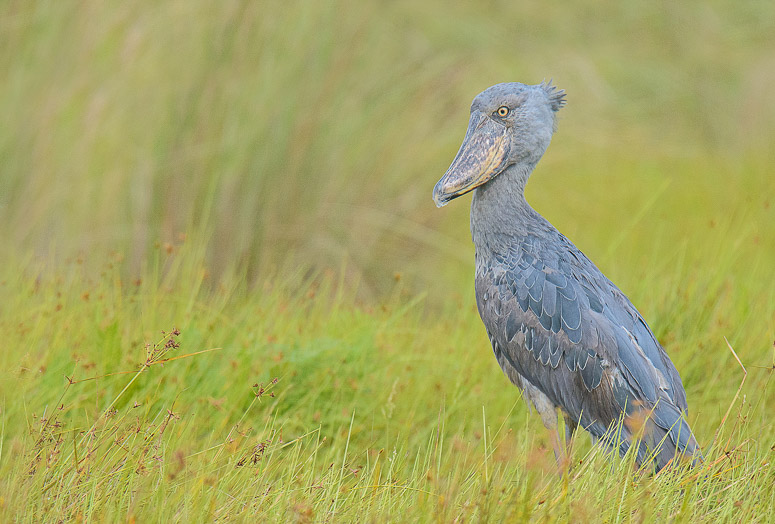
Chiara Talia

Birds of Greece – exploring Athens and beyond
Hello fellow birdwatching enthusiasts! So, here’s the scoop – when I found out I was going to Greece, I wasn’t exactly thinking “birdwatching paradise.” Greece had always been more synonymous with ancient history, stunning landscapes, wonderful beaches, and sea for me. But let me tell you, I was in for a pleasant surprise.
My trip to Greece was primarily for personal reasons, and my schedule was quite tight. To make the most of my limited time and maximize my chances of spotting some incredible birds, I decided to join a birding tour. My guide for the adventure? Spyros from Greece Bird Tours , who kindly offered to bring me around!
My visit fell in end of September. While I had missed the chance to see some of the breeding birds, I was just in time to witness some of the migratory species passing through.
The birding adventure begins
My day began early, as it is usual for any birdwatcher. I met up with Spyros at a metro station, grabbed a delicious koulouri (a typical sesame bread ring) and a coffee to fuel our day, and we were off, leaving Athens behind.
Our destination was the Erythres Plain in the northern part of Attica. This area offers a mix of agricultural landscapes, including grape orchards, cotton and corn fields, along with pockets of natural beauty like rocky hills and macchia vegetation (typical Mediterranean shrubland).
Our first stop was like stepping into a bird carnival. Hundreds of Barn swallows were gearing up to leave Greece, and among them and the sand martins , I spotted my first “lifer” of the day: a Red-rumped Swallow . In birdwatching language, “Lifer” indicates a species you see for the first time in your life.
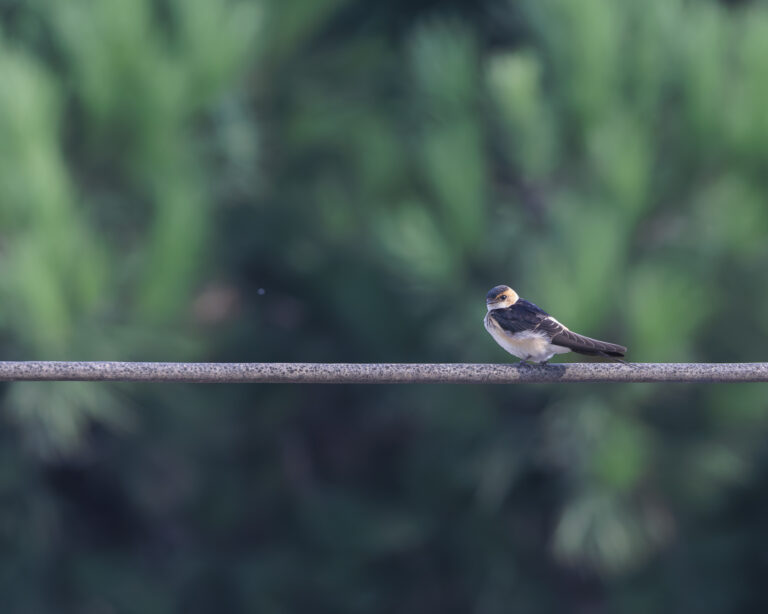
Exploring greek countryside
As we ventured further, we came across… a Short-Toed Snake Eagle perched on a tree. What made this sighting quite special is that I had never seen this species in such a relaxed pose before. It was fascinating to appreciate the bird’s form and colors while it rested on the tree. It looks like all the short-toed snake eagles I often spot in Italy like only to fly!
The dominant species in the area turned out to be the Spotted flycatcher . These birds were everywhere, perching on conspicuous branches, hunting insects, and returning to the same spot. Their cooperative nature made them great subjects for bird photography. I obtained quite a few interesting photos, because 1) the background was very far away from the subjects and 2) the background was really varied with different colors thanks to the great agricultural variety of this region. A small selection of photos is below:
Just when I thought things couldn’t get any better, a Red-Breasted Flycatcher made a brief appearance. It perched for less than a minute, but allowing us to admire its characteristic upward-flicked tail. It was mind-blowing to think that this little bird was on its way to India!
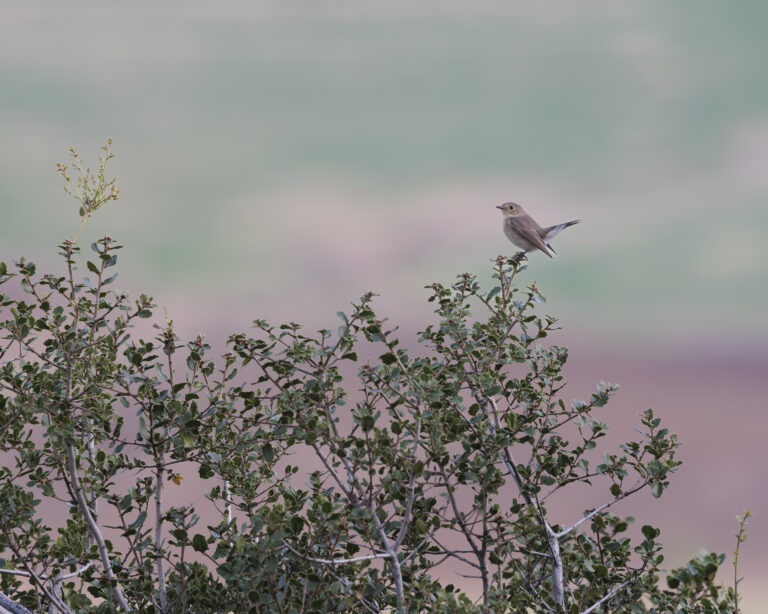
We also had numerous encounters with Red-Backed Shrikes , mainly juveniles, which were extremely collaborative!
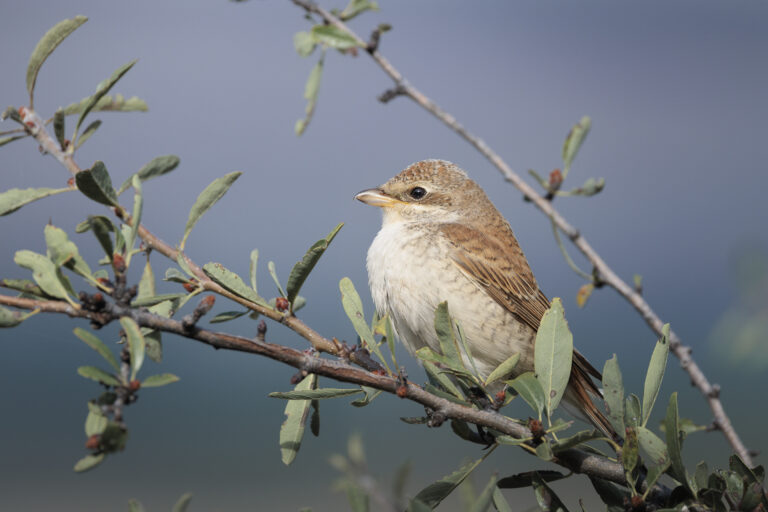
On the other hand, the Cirl Buntings , despite being resident species in the area, proved to be quite elusive and challenging to photograph. It was a reminder that bird photography can be quite unpredictable! It is just part of the experience!
From Rocks to Raptors: The Thrill Continues
We then moved to an old quarry with rocky terrain, where we hoped to spot a special bird. After a bit of patience, the Western Rock Nuthatch , typically associated with rocky habitats, made an appearance. Luckily, they like to call from rock edges, so we were able to locate a few individuals.
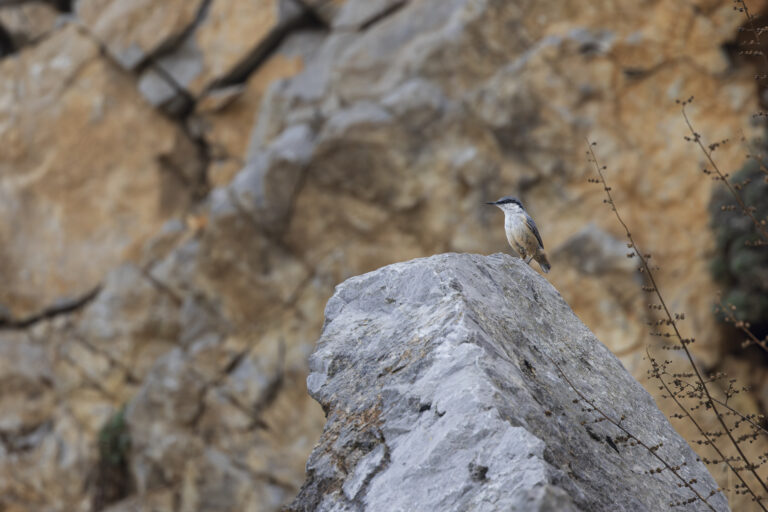
While we were on the lookout for the nuthatches, the Long-Legged Buzzard , a resident bird of Attica, swooped in, almost as if to steal the show. Two birds, possibly forming a pair, circled around us for quite a while, allowing me to admire their eagle-like silhouette with long, broad wings.
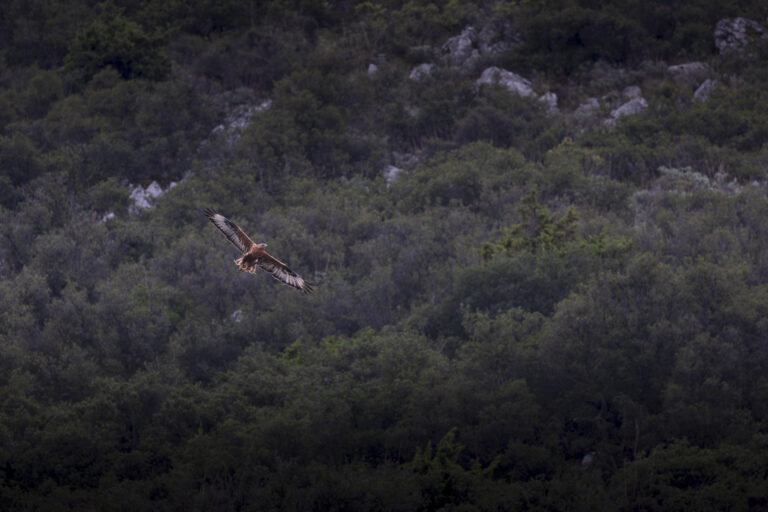
The surprises just kept on coming when Spyros spotted two Griffon Vultures soaring high in the sky. Though they were distant, the use of a spotting scope gave me a closer view.
In addition, we were also treated to a passage of at least ten European Honey-Buzzards , which was a delightful surprise as I have never seen this species from so close.
On the way back
During our drive, we were intrigued by an unfamiliar call, which led us to identify a Eurasian Wryneck (although we didn’t see it). We also briefly glimpsed a Syrian Woodpecker , though it was too quick for me to capture with my camera.
In just a few hours, I was able to observe 47 different bird species, including several lifers. My birdwatching adventure in Greece far exceeded my expectations, and I’m already planning my next trip to explore more bird wonders in this beautiful country.
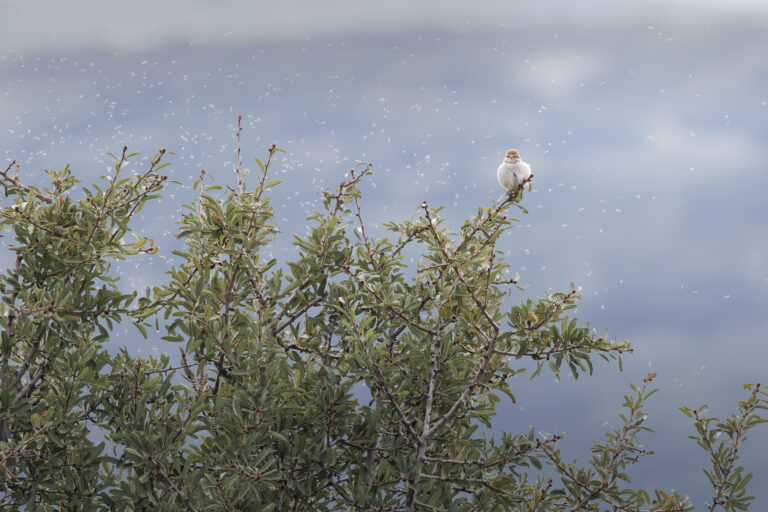
My Greek Bird List
This is the full list of the birds seen during the birding tour (except for the Blue rock thrush which I spotted on the next day when I was not even really birding!). In bold the lifers.
- Feral Pigeon
- Collared Dove
- Common Swift
- European Honey-buzzard
- Griffon Vulture
- Short-toed Eagle
- Common Buzzard
- Long-legged Buzzard
- European Bee-eater
- Eurasian Wryneck
- Syrian Woodpecker
- Lesser Kestrel
- Common Kestrel
- Peregrine Falcon
- Red-backed Shrike
- Eurasian Jay
- Common Magpie
- Hooded Crow
- Common Raven
- Eurasian Blue Tit
- Crested lark
- Sand Martin
- Barn Swallow
- Red-rumped Swallow
- Wood Warbler
- Willow Warbler
- Common Chiffchaff
- Eurasian Blackcap
- Sardinian Warbler
- Western Rock Nuthatch
- Eurasian Blackbird
- Spotted Flycatcher
- European Robin
- Red-breasted Flycatcher
- Common Redstart
- European Stonechat
- Northern Wheatear
- Eastern Black-eared Wheatear
- House Sparrow
- Grey Wagtail
- Western Yellow Wagtail (feldegg)
- Common Linnet
- European Goldfinch
- Corn Bunting
- Cirl Bunting
- Blue rock thrush
Want to learn more about birds of Greece and the available tours of Greece Bird Tours? Check their website !
And if you want to see more photos and videos from the trip, you can also have a look at this Reel I shared on Instagram.
Thank you for joining me on this journey. And remember to follow me on Instagram to stay updated on all my next birding adventures!
Chiara
1 thought on “Birds of Greece – exploring Athens and beyond”
Great photos and superb trip report! Looking forward to the next spring birding in Athens!
Leave a Comment Cancel Reply
Your email address will not be published. Required fields are marked *
Save my name, email, and website in this browser for the next time I comment.

Lesbos Birding Holiday
- Birdwatching Tours
- Greek Islands
On this Lesbos Birding Holiday you discover one of the most famous bird-watching sites in Europe with an expert bird guide. Positioned between three continents, Lesbos island is on the migrating paths of most European and African bird species. Furthermore, being so close to the Turkish border, here’s where you see many birds of Asian origin. Every year many rare sightings are recorded here, as everything that flies, lands, or takes off is immediately spotted!
Since the early 1990s, Lesbos has established itself as one of the premier birding destinations in the Mediterranean basin. It combines the excitement of witnessing bird migration with several rare key species.
Highlights:
- Lesbos birdwatching hot spots at the peak of the spring or autumn migration!
- Springtime equals numerous birds and blooming wildflowers
- Ducks, egrets, and herons galore, as well as other waders and waterfowl
- Kalloni Salt Pans visit
- Look for the greatest drawcards of the island – Asian species at the westernmost edge of their range which are found nowhere else in Europe: Cinereous Bunting & Krüper’s Nuthatch.
Your local bird guide is a highly knowledgeable local ornithologist. This makes all the difference on this trip that is suitable for all. From easy birding to the absolute beginner or fanatic “twitchers”, the trip is catered to your needs.
Read more on Lesbos Birding: Why Greece should be your next birding destination ..
Departures in spring and autumn
Contact us for questions, bookings and enquiries .
Other Information:
More on Lesbos Birding
Link to the free e-book Birding in Greece
Arrival at Lesbos airport. Transfer to Kalloni wetland and spend the night at your 3* Hotel. Get to meet with your knowledgeable and friendly local bird guide! The next days, your guide will show you the best bird-spotting spots.
Birdwatching all day long. Spend your day with your expert guide at the Kalloni Gulf wetlands and the Achaderi Pine Forest. Full day private-guided birding. Get to see among others, many Collared Pratincoles that are grazing in fields around the Kalloni Saltpans. The shallow basin of the Gulf of Kalloni holds significant numbers of waterfowl and waders, as well as many Nightingales , Shrikes , Buntings and warblers . Later, we go to the Pine forest for a chance to uncover many forest species in, such as Short-toed treecreepers , long-tailed tits and of course the rare Krüper’s Nuthatc h .
Dinner & overnight at 3* Hotel, Kalloni.
Full day of birding at Gulf Kalloni wetlands and central Lesbos, Lepetimnos mountain. The day will start with the wetland, in search of various waterbirds and waders such as Pied Avocet, various terns like Common, Little, Black, Whiskered and White-winged Tern, and others like Little Stint, Curlew Sandpiper, Kentish and Little Ringed Plovers. Black-crowned Night Heron and Little and Spotted Crakes are also a possibility.
From there our next destination will be the rest of Central Lesvos, towards the North. Where we have the opportunity to observe Masked and Woodchat Shrikes, Sombre Tits, Eastern Rock Nuthatch, Rüppell’s , Subalpine, and Olive-tree Warblers, Black-headed Bunting, Middle Spotted Woodpecker, Little Owl, and Eurasian Scops Owl.
Dinner & Overnight at your 3* accommodation in Kalloni.
Wonderful guided birding in the West of Lesvos. Cinereous Bunting is the main target for today. While searching for it we will be able to see a variety of species occupying the extensive garrigue areas of the western island with scattered and thin oak forest.
Transfer to the airport and flight back home.

Tour Reviews
I would like to express to you my great satisfaction, the stay met my expectations in every respect and I would like to thank you for it, because it is the result of your organization and your wise choices in any field.with Heleni, I was lucky to have the first guide of Lesvos, she had all the qualities, charming, very competent professional with a great knowledge of the birds, the natural environments of Lesvos and the road network and slopes of Lesvos. Thanks to her I was able to observe and photograph my 3 target species, Cinereous Bunting, Rüppel’s Warbler and Krüpper’s Nuthatch and of course many other species.

Leave a Review
Cancel reply.
Upload your face pic * (Allowed file types: jpg, gif, png , maximum file size: 1MB.
You May Also Like

Northern Greece Birdwatching Holiday

Athens Eco Tours Greece
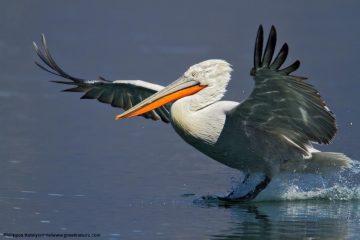
Lake Kerkini Birding Breaks Holidays & Tours
Privacy overview.

Intuitive Machines/Nokia Bell Labs
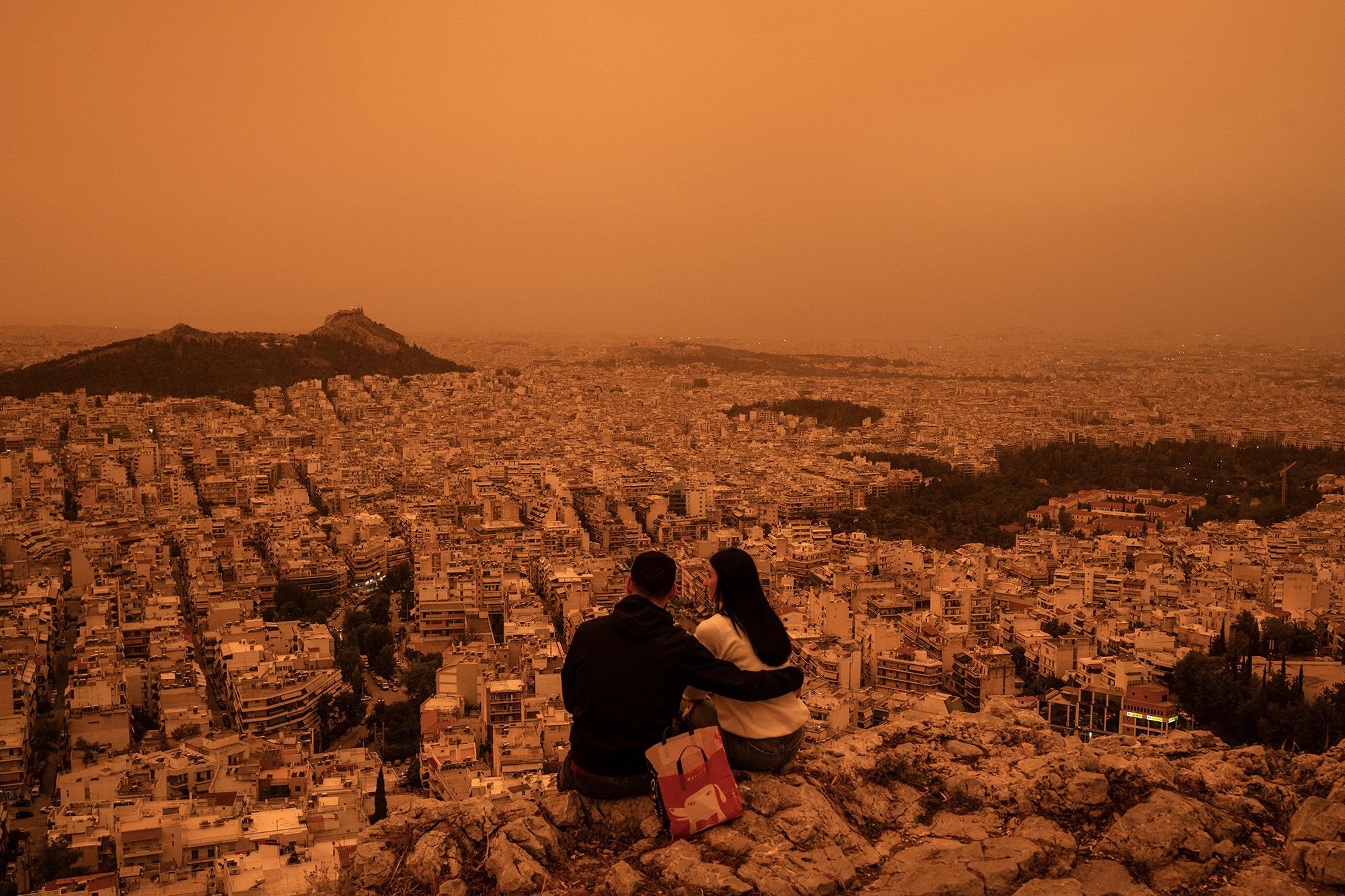
Angelos Tzortzinis/AFP/Getty Images

Seth Herald/Reuters
Weekly News Quiz: April 25, 2024
By Alexandra Banner and James Grant
A protest movement. A dust storm. A virus outbreak. What do you remember from the week that was?
Keep up with the news you need. Sign up for the 5 Things newsletter.
College campuses across the US have erupted with pro-Palestinian protests. Which university emerged as the epicenter of the demonstrations?

A pro-Palestinian encampment at Columbia University prompted similar protests at colleges across the country . Hundreds of demonstrators were arrested this week.
Which European city was blanketed by an orange-colored haze this week?
An orange haze of dust from the Sahara Desert covered parts of Greece , prompting authorities to issue health warnings.
President Joe Biden signed a $95 billion foreign aid package that could lead to a nationwide ban of which app?

A wide-ranging foreign aid package meant to support Israel and Ukraine poses a serious risk to TikTok. Under what is now US law, TikTok will be forced to find a new owner within months or be banned from the US entirely .
Roughly what percentage of people in the US live with unhealthy air pollution?

Nearly 40% of people in the US are living with unhealthy air pollution, according to a new report from the American Lung Association. The report showed several populous cities also received "F" grades for ozone smog , a form of pollution caused by emissions from cars, power plants and refineries.
According to a new bill in Tennessee, which public service workers may now carry guns in the workplace?
Tennessee lawmakers passed a bill allowing teachers to carry concealed handgun s on school grounds if they meet certain conditions.
Which automaker recently reported a 48% plunge in earnings?

Tesla reported an ugly financial performance for the first quarter of the year. However, the embattled company is promising a cheaper car model will still go into production in 2025.
Which type of livestock in the US is being impacted by a bird flu outbreak?
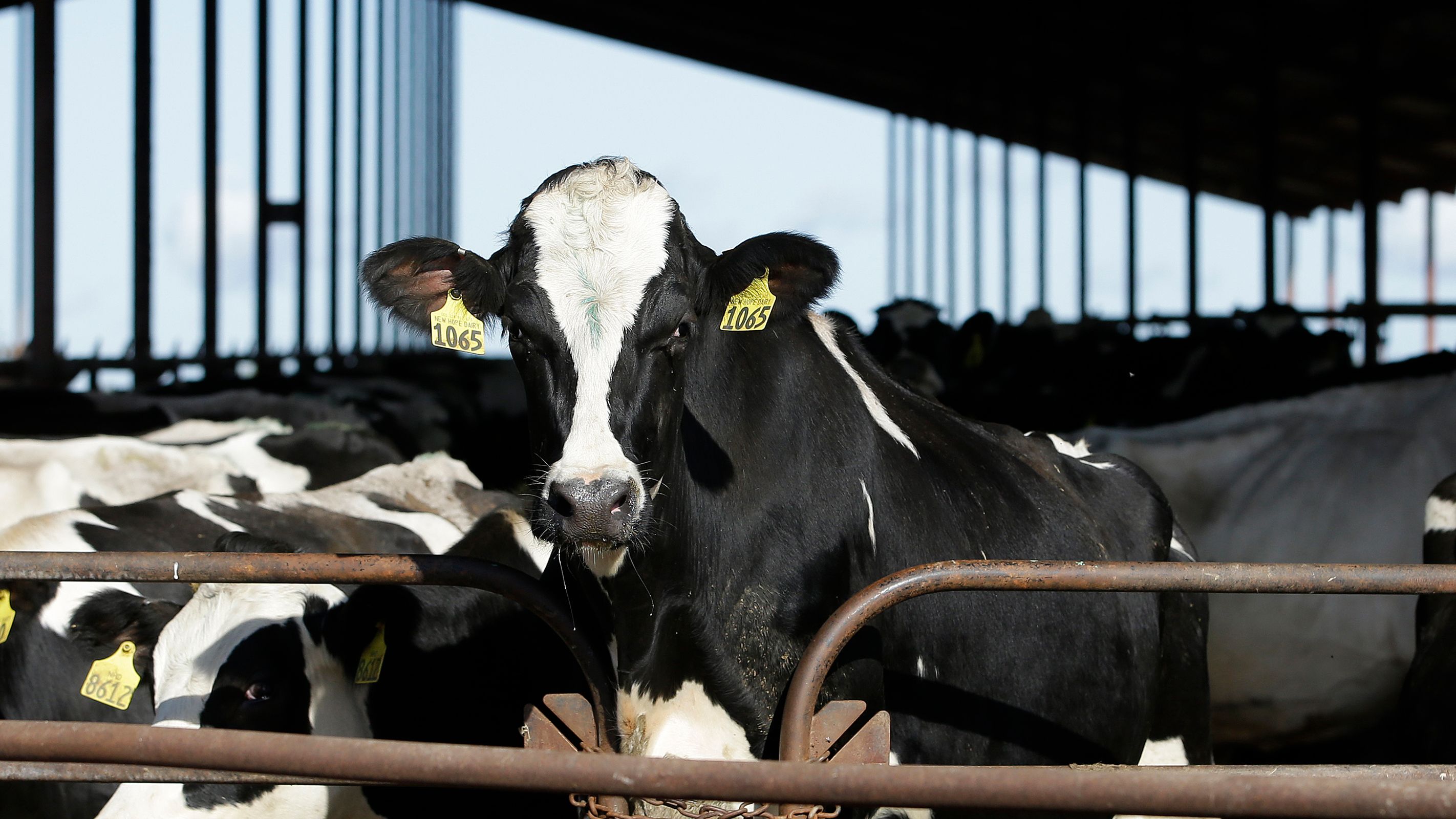
Viral particles of H5N1 bird flu viruses have been detected in dairy cows . The FDA believes most milk products on US grocery shelves are still safe to drink because the viruses will likely be killed during the pasteurization process.
NASA is aiming to install a 4G network on the moon that could enable texting and streaming on the lunar surface. Which company is NASA partnering with on the venture?
NASA and Nokia are working to take 4G into space later this year. It could lay the groundwork for an off-world internet similar to Earth's.
Which theme park reported a ride collision this week that injured more than a dozen people?
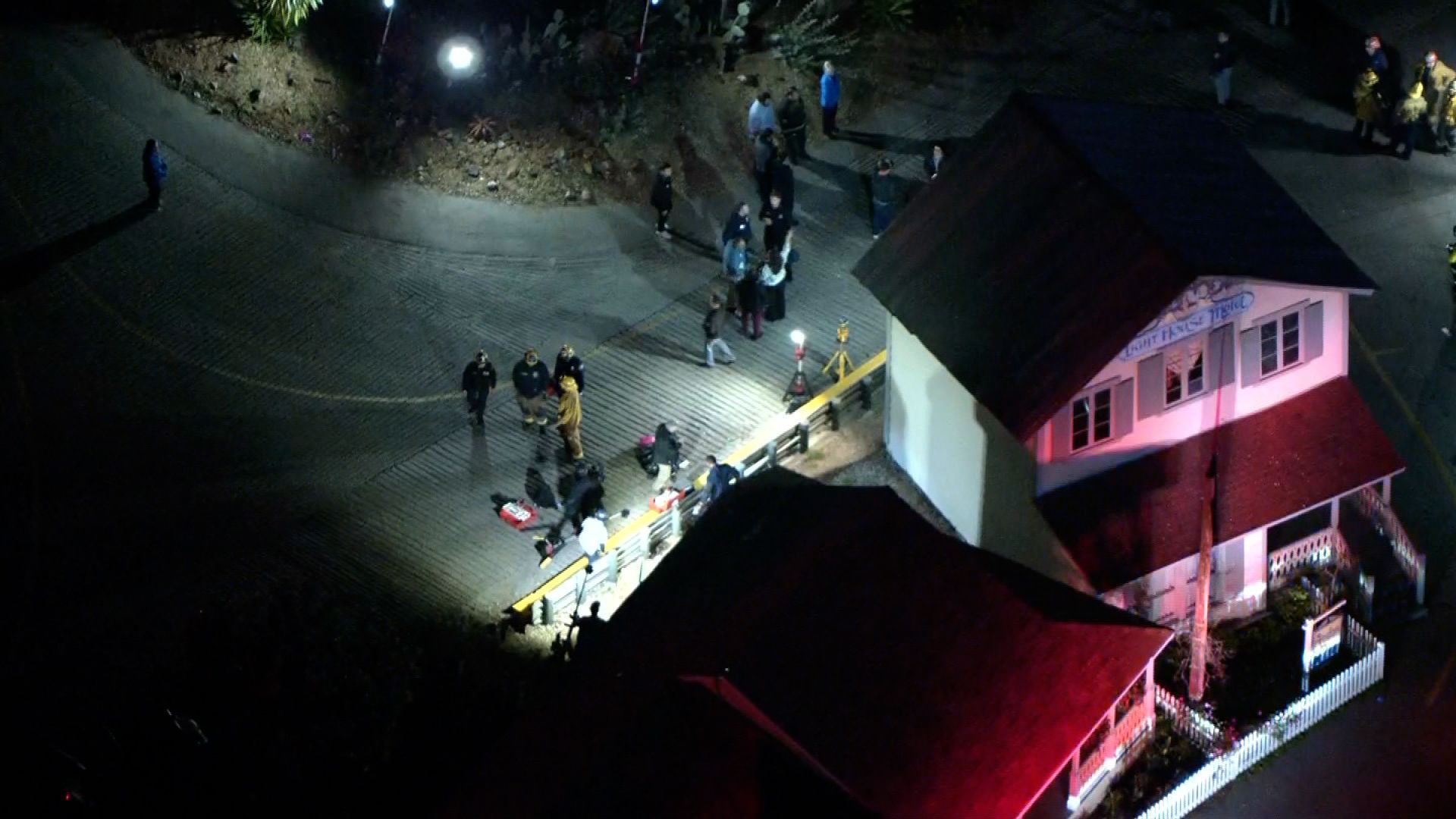
A tour tram at Universal Studios Hollywood crashed and "ejected multiple passengers," according to California authorities. Fifteen people were taken to a hospital for treatment with minor to moderate injuries.
Which artist was inducted into the Rock & Roll Hall of Fame this week?

The Rock & Roll Hall of Fame has announced their 2024 class of inductees , which includes Cher, Mary J. Blige and Dave Matthews Band. The induction ceremony will take place in October.


IMAGES
COMMENTS
Ruppell's Warblers and more: Birding in Athens, March 30-31st. Ruppell's Warblers, Great Spotted Cuckoos, Blue Rock Thrushes and more! Birding in Athens can be trully unforgettab…. April 09, 2024. Load More. Search our website for trip reports, bird lists and birding destinations.
Greece's total of 204 IBAs is significant by European standards and sites such as Evros Delta IBA, Nestos Delta IBA, and the vast Lake Kerkini IBA will all be visited on our Greece birding tours. Birding in Greece offers a lot of variety with Greece's bird highlights too extensive to list here, however we have picked out a few of the star ...
Natural Greece organises high-quality, expert-led birding and wildlife tours in Greece. A warm welcome to all nature lovers! If you are looking for a professionally organised, expert-led wildlife holiday or tour, this is a great place to start. Here you find extraordinary nature travel experiences in Greece, a country with an exceptionally rich ...
We invite you to learn more about our birding tours to Greece by clicking on one of the tours below. Guided Group Tours. ... We offer you small-group birding and nature tours, limited to just 8-10 persons led by expert guides. Learn and explore with like-minded people, enjoy local food and culture, and immerse yourself in birding and nature. ...
Call 1-866-547-9868 (US or Canada) or (01) 520-320-9868 or click here to email. * Tour invoices paid by check carry a 4% discount. Details here . Maximum group size seven with one leader; 12 with two leaders. WINGS Birding Tours to Greece: Lesvos - Spring Migration Through the Aegean - Itinerary. WINGS is a worldwide birding tour company ...
Classical Greece. Fine southeast European birding--at the peak of migration--with archaeological and cultural stops. Greece has been known for millennia as a center of culture and learning, with a fascinating human history that spans some 4000 years of civilization. And, fortunately for those looking to combine a bit of culture with their ...
Guided Birding. Join our team of bird experts on a unique bird watching adventure in Greece's beautiful countryside! Our exceptional service and attention to detail guarantee an unforgettable experience full of memorable moments. Connect with like-minded enthusiasts and observe stunning avian wildlife in their natural habitat.
Birding in Greece organized for me and my friend a photographic tour to the area of Nea Kios by Nafplio. Our guide Chris Vlachos was not only able to give us excellent photographic tips but also have found all the birds breeding this time of the year in this area. His photographic experience and his detailed knowledge about the birds is amazing!!!
2-4 days tours. Getting out of Attica will give us the chance to explore Greece's nature at it's best. Species like Dalmatian Pelicans, Black Woodpeckers, Syrian Woodpeckers, Olive-tree Warblers, Rock Partridges, Levant Sparrowhawks, Egyptian Vultures, Short-toed Eagles, all breed in only a few kilometers out of the capital.
Birding tour in Athens: Nov 3rd 2022. Birding tour in Athens: Nov 3rd 2022 By early November, fall migration is usually over: most summer species has departe…. November 07, 2022. Search our website for trip reports, bird lists and birding destinations.
Greece Birding Tour: Spring Birding Adventure April 2025/2026. Greece has one of the highest bird densities in Europe and our tour will take in the best avifauna this beautiful country has to offer, as well as the fascinating culture and history of one of the oldest civilizations on Earth. This ten-day, small group birdwatching tour will start ...
Call 1-866-547-9868 (US or Canada) or (01) 520-320-9868 or click here to email. * Tour invoices paid by check carry a 4% discount. Details here . This tour is limited to 10 participants with two leaders. WINGS Birding Tours to Greece: Mainland Spring Migration - Itinerary.
Crete is the largest Greek island and lies a long way south in the eastern Mediterranean. Spring and Autumn migrants and winter visitors use the island and it has a good range of resident birds, such as Griffon Vulture, Bearded Vulture, Bonelli's Eagle, Ruppell's Warbler and Red-billed and Alpine Chough. This mainly limestone island is ...
Book now. Beautiful Lake Kerkini lies in the north of Greece, only one hours drive from the city of Thessaloniki. Lake Kerkini is a pear shaped fresh water lake, fed by the Strymon River and is about fifteen kilometres long and nine kilometres across, when full and an embankment allows for raised viewing at several key strategic areas.
About Greece Bird Tours. G(caps)reece Bird Tours is run by experienced greek bird guides and birdwatchers.Most of us also enjoy bird photography (you name it, we are Canon guys). Our goal is to make you have the best and memorable birdwatching experience in Greece, while feeling safe and relaxed throughout the trip.
The complete General Information for this tour will be sent to all tour registrants and of course supplemental information, if needed, is available from the WINGS office. ENTERING GREECE: United States citizens will need a passport valid for at least six months beyond your intended date of departure and with at least one blank page for an entry ...
Walk the eastern side's pine forests for Krüper's Nuthatch. Enjoy pre-breakfast walks to a nearby pond for Little, Spotted, and Baillon's Crakes. Join Naturalist Journeys for this super popular Greece birding tour. The stunning Greek island of Lesvos is the place to be to witness the miracle of Europe's spring migration.
Bird Trip: Lake Dystos, Sept 12 2021 Ricardo from Spain is our latest birder who wanted to see some of Greece's spe… September 29, 2021
Greece Birding Tour: Fall Birding Adventure October 2024/2025/2026 . Northern Greece often falls under the radar for birders looking for a good birdwatching holiday, with other parts of Europe grabbing far more of the headlines. However, for those in the know, Greece is incredible value and packed full of wonderful birds.
1st record for Greece: Eastern Yellow Wagtail ( Motacilla tschutschensis ) at Schinias National Park This autumn, we ha… December 01, 2023
Birding Tour Greece: Lesvos in Spring Extension May 2025/2026. For the last 40 years, birders across the world have flocked to Lesvos for the awesome birding that this small Mediterranean island has to offer. Lesvos (part of Greece) is separated from mainland Turkey by just eight miles (14 kilometers) of the Mytilini Strait.
My trip to Greece was primarily for personal reasons, and my schedule was quite tight. To make the most of my limited time and maximize my chances of spotting some incredible birds, I decided to join a birding tour. My guide for the adventure? Spyros from Greece Bird Tours, who kindly offered to bring me around! My visit fell in end of September.
12+. Age. Birdwatching Tours. Greek Islands. On this Lesbos Birding Holiday you discover one of the most famous bird-watching sites in Europe with an expert bird guide. Positioned between three continents, Lesbos island is on the migrating paths of most European and African bird species. Furthermore, being so close to the Turkish border, here ...
Athens, Greece Barcelona, Spain Berlin, Germany Milan, Italy An orange haze of dust from the Sahara Desert covered parts of Greece , prompting authorities to issue health warnings.